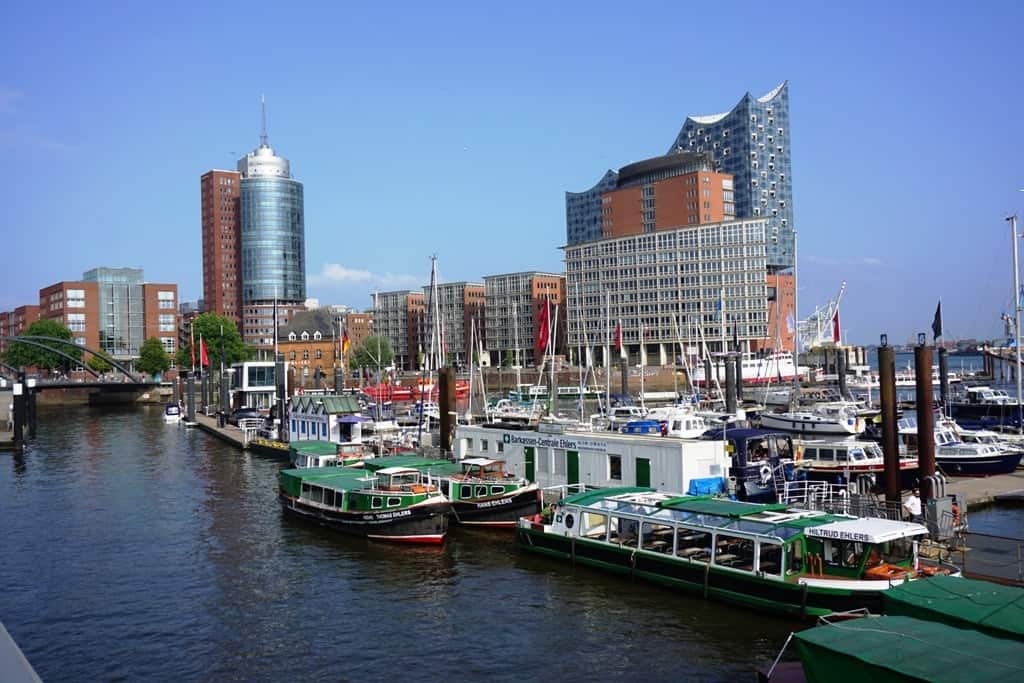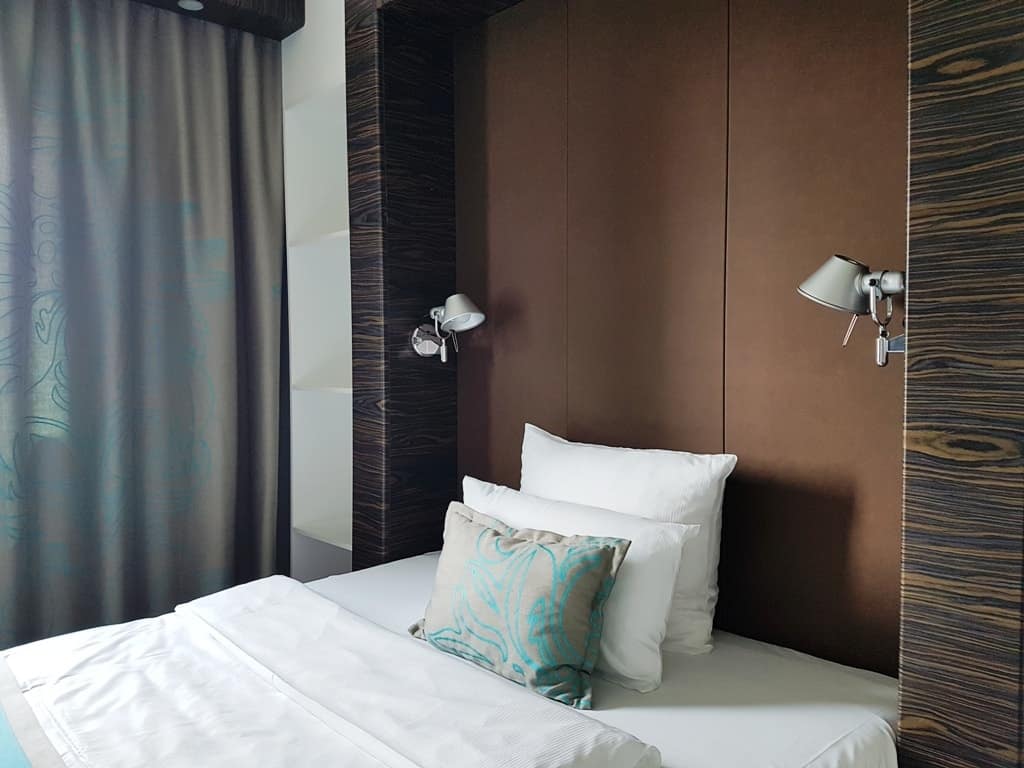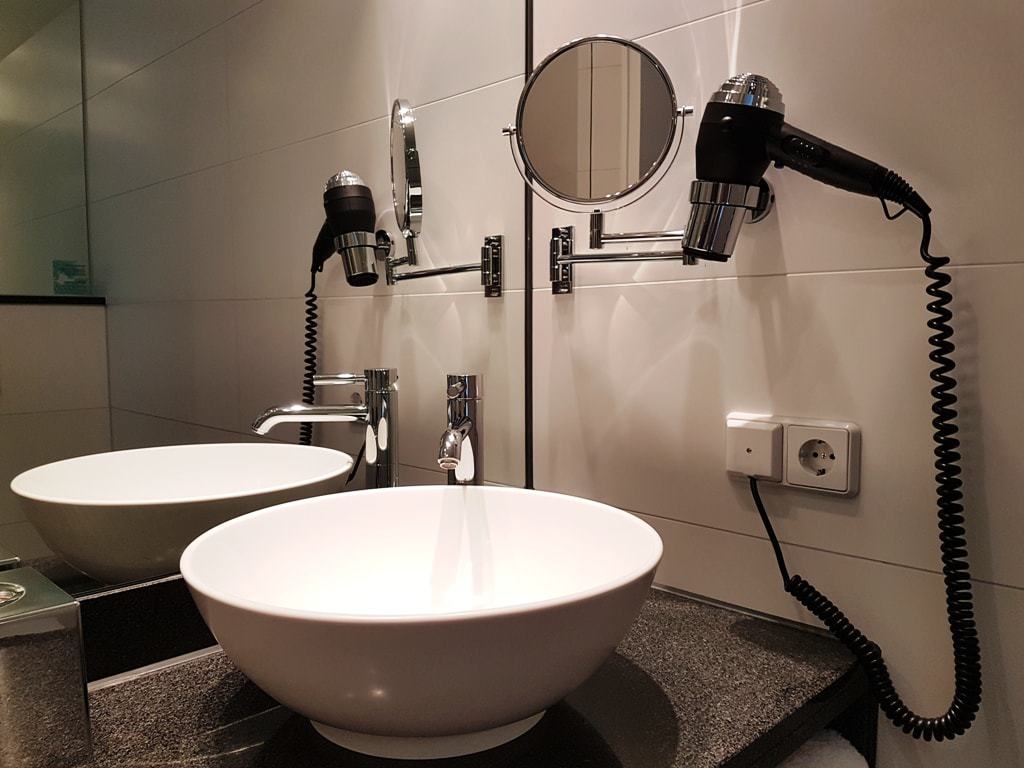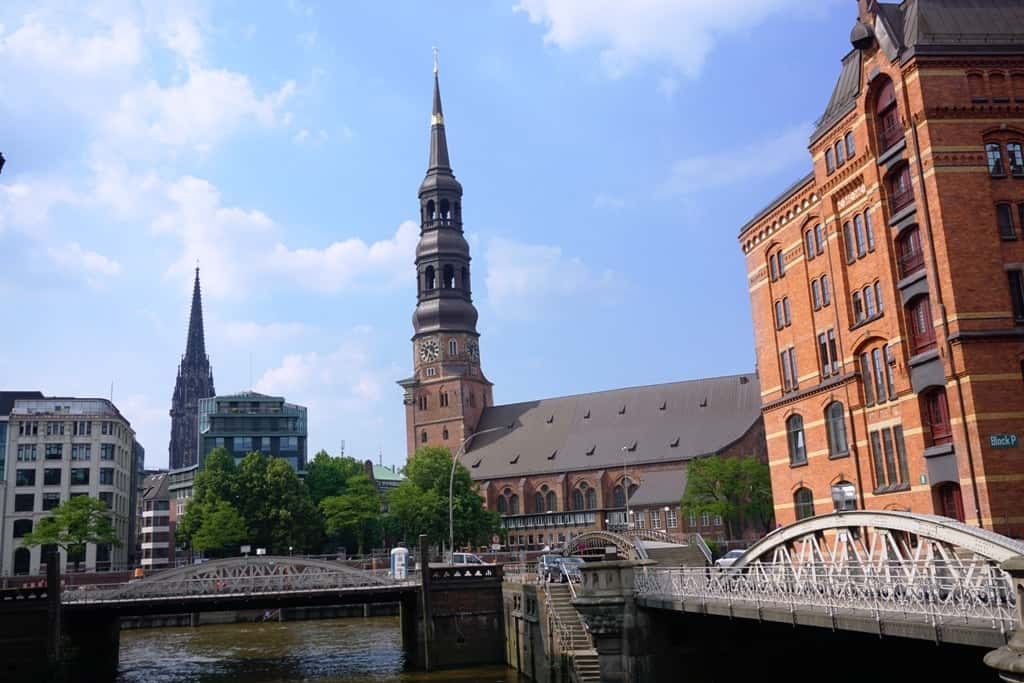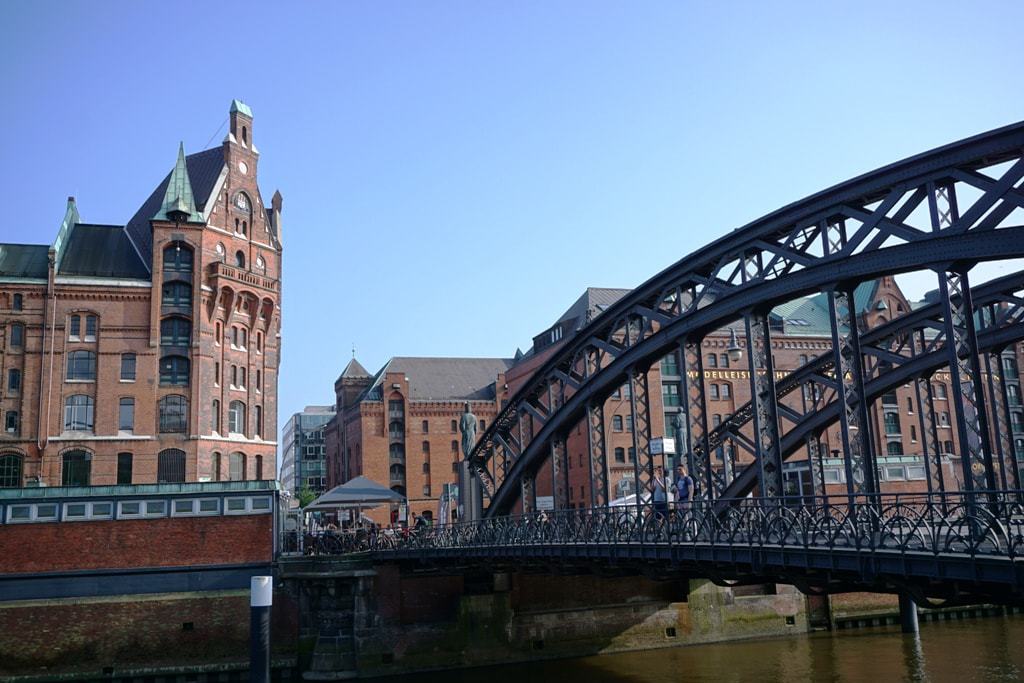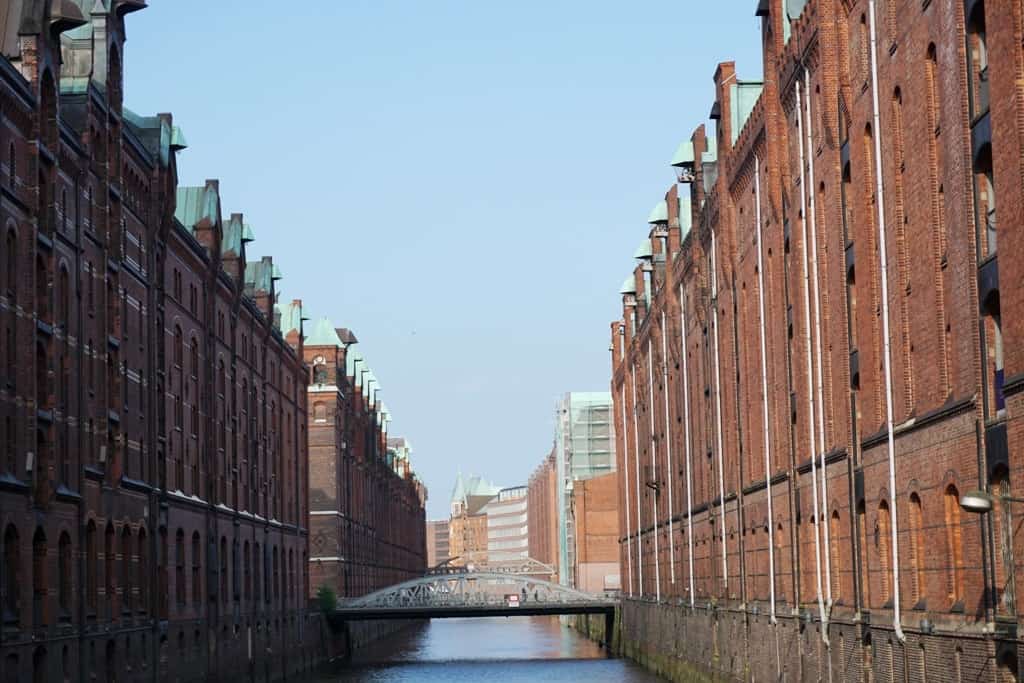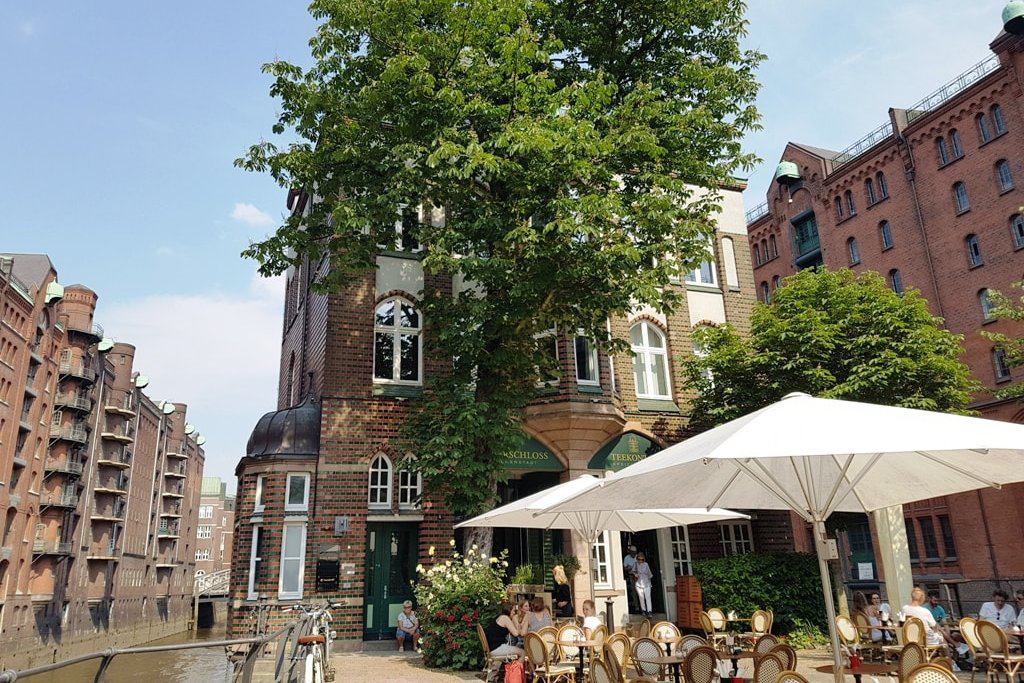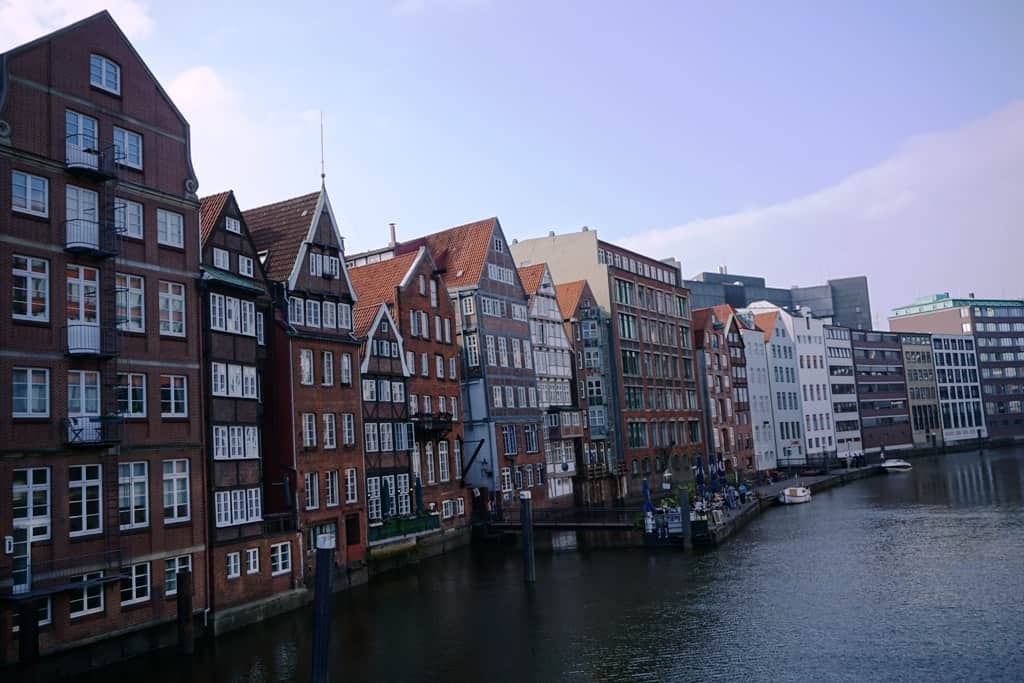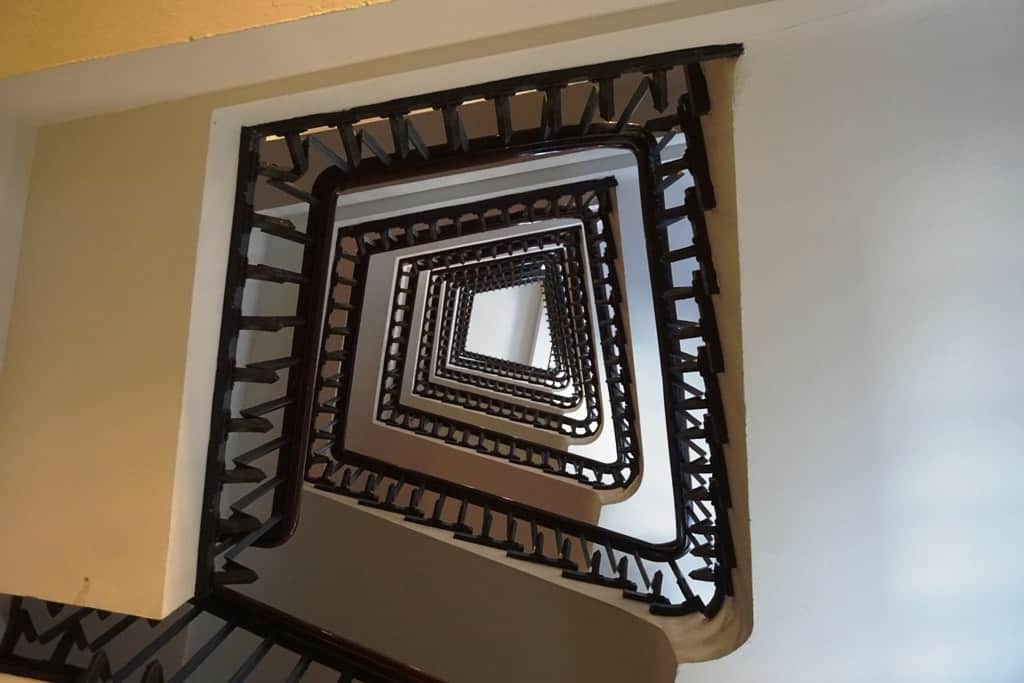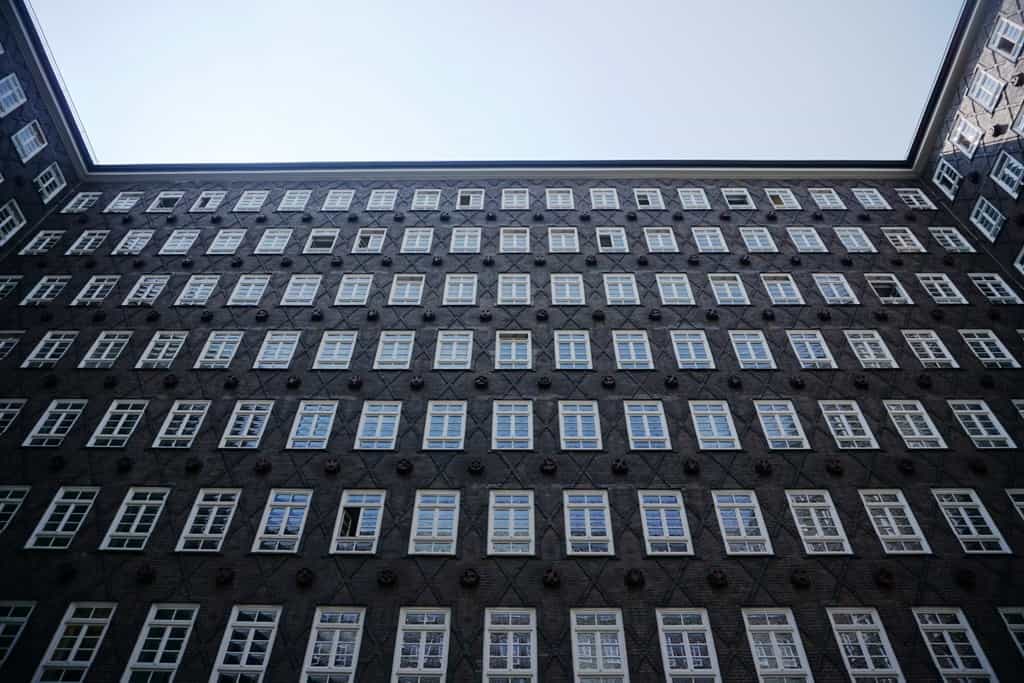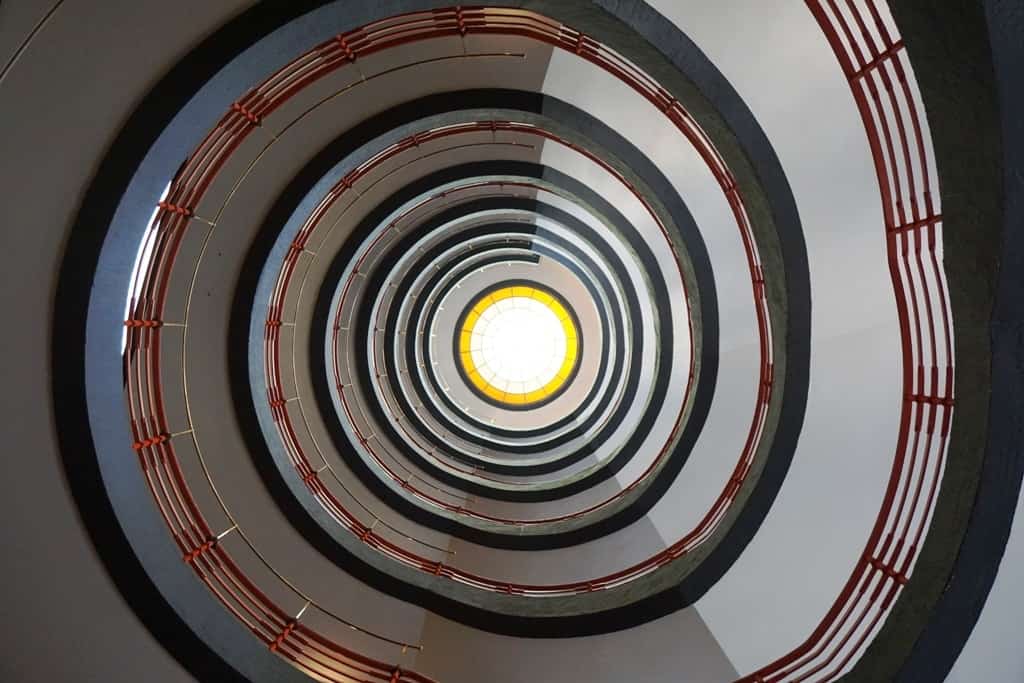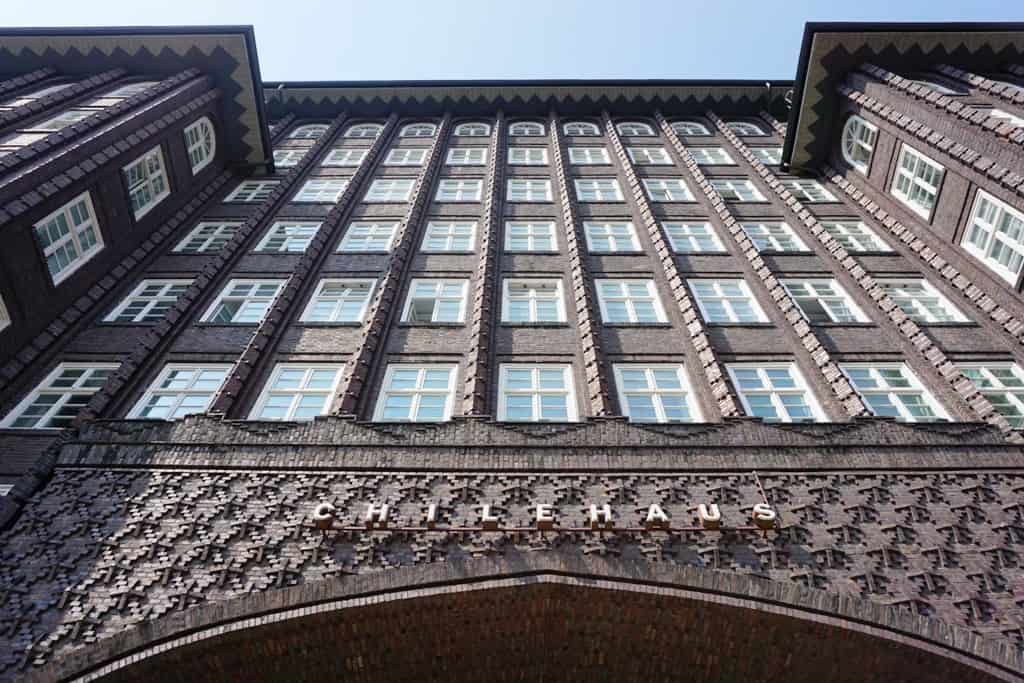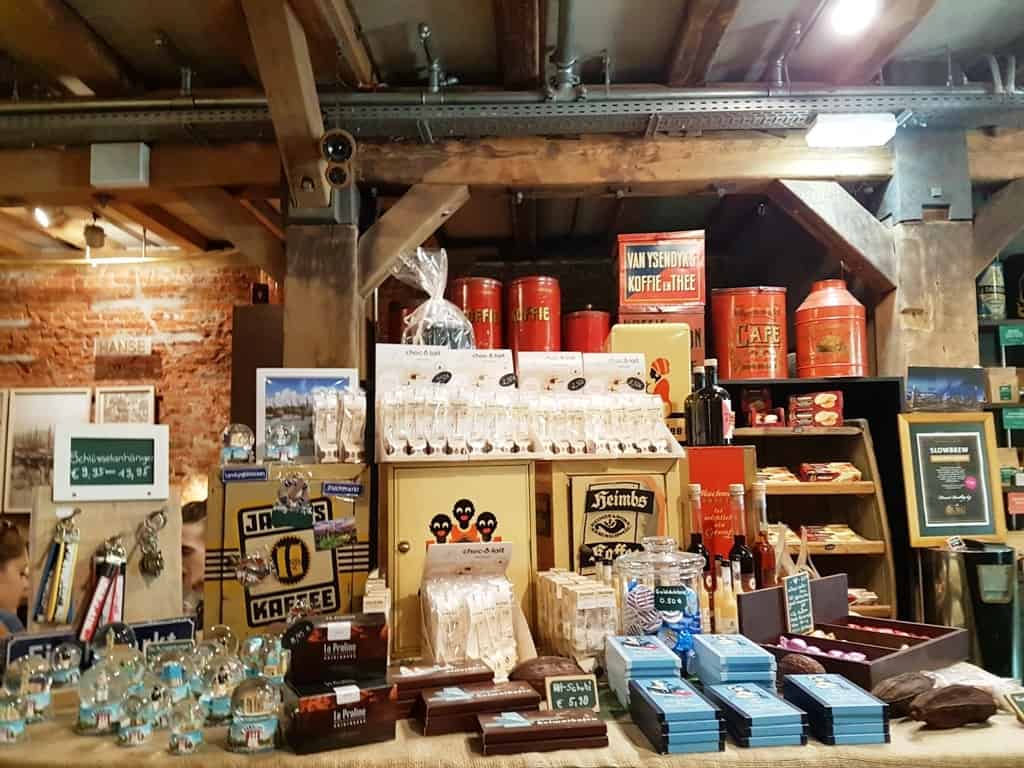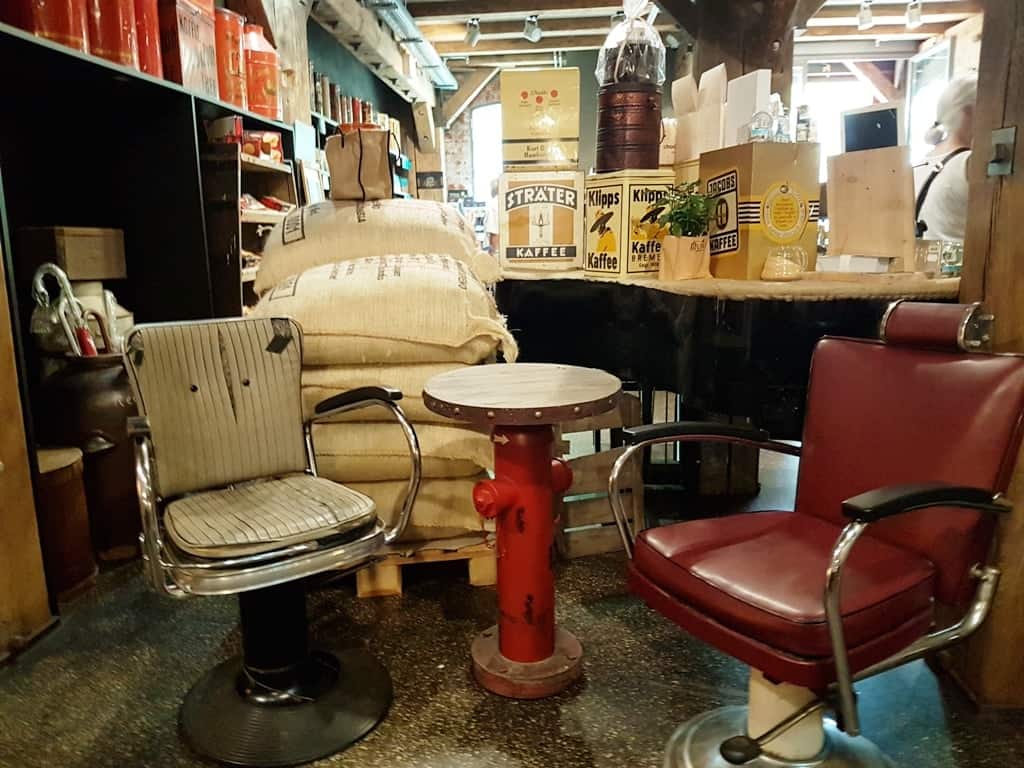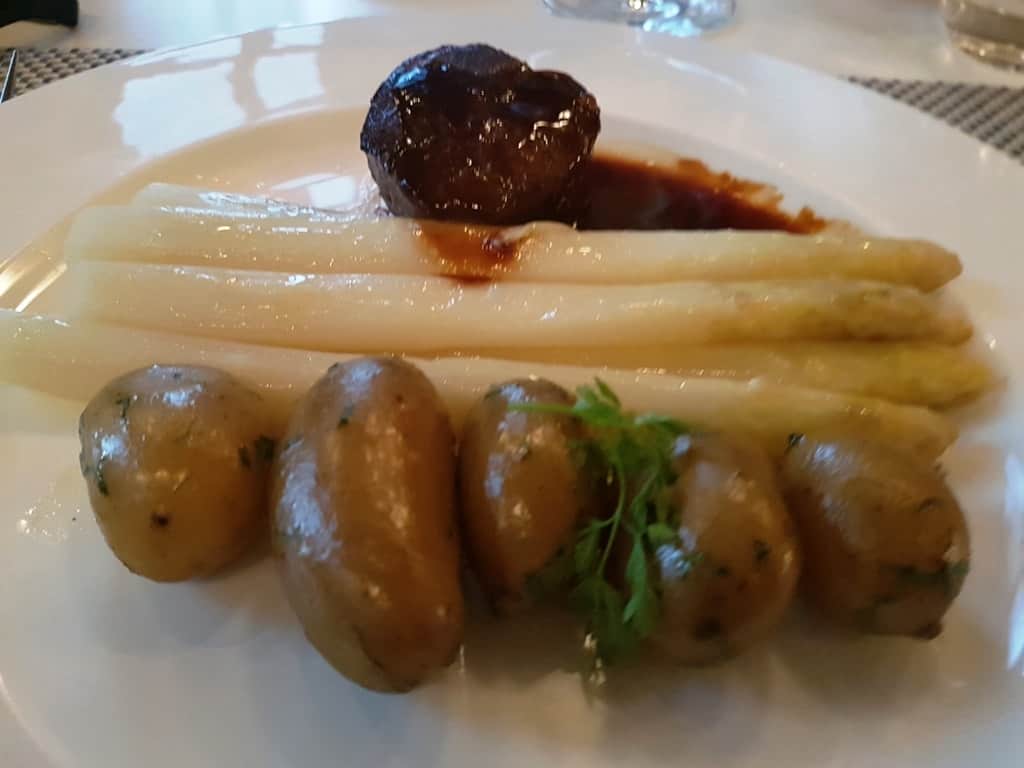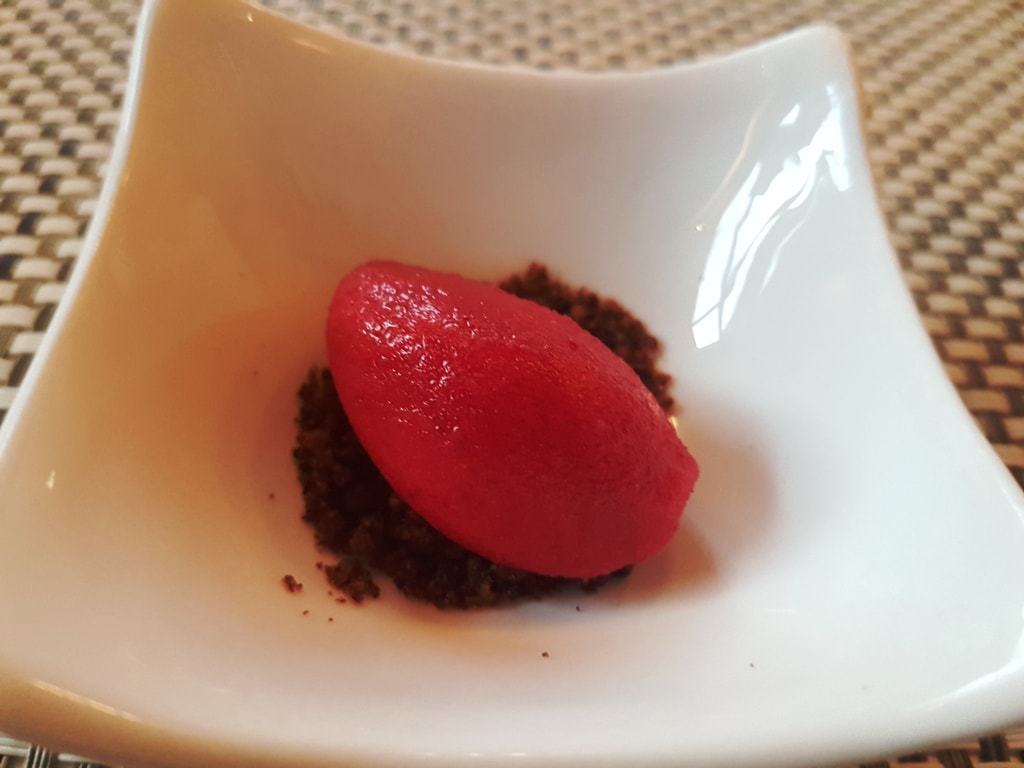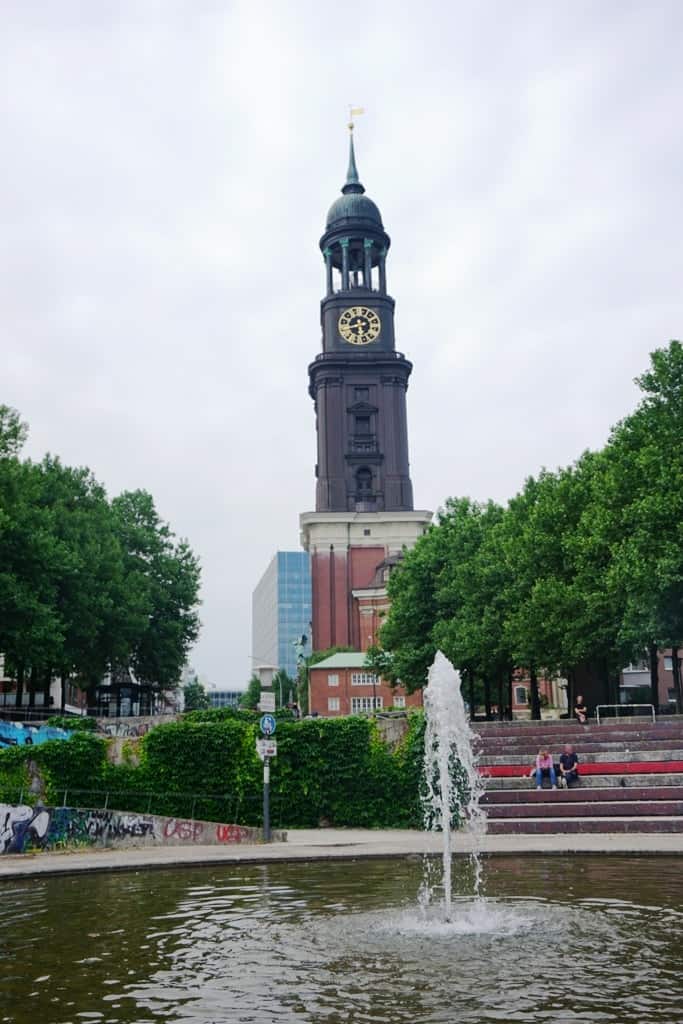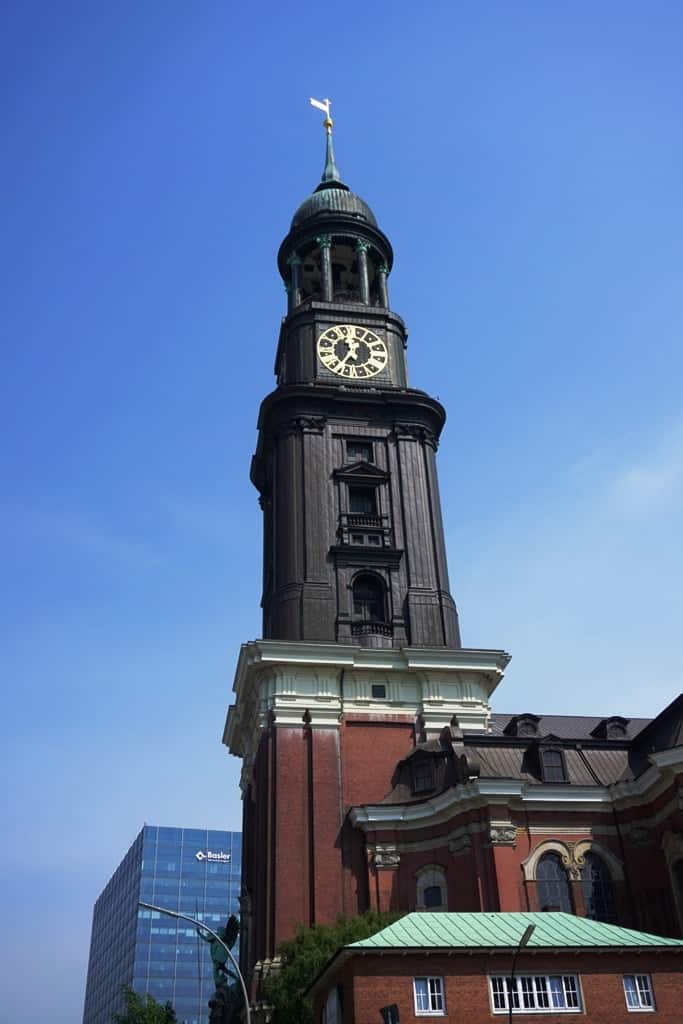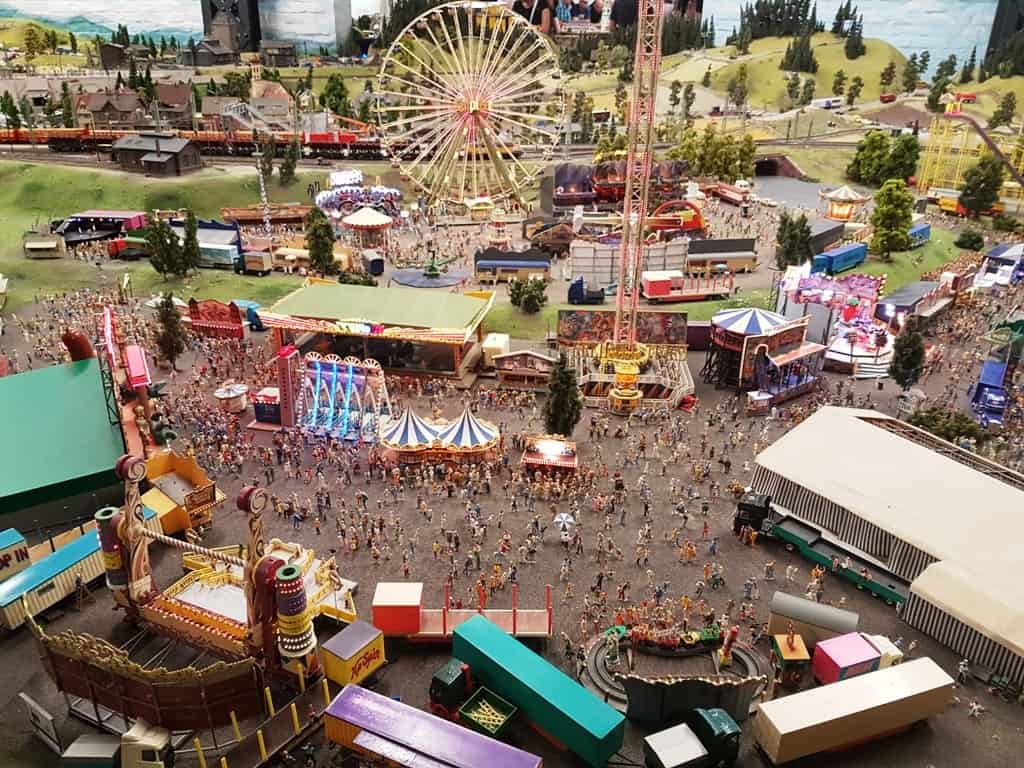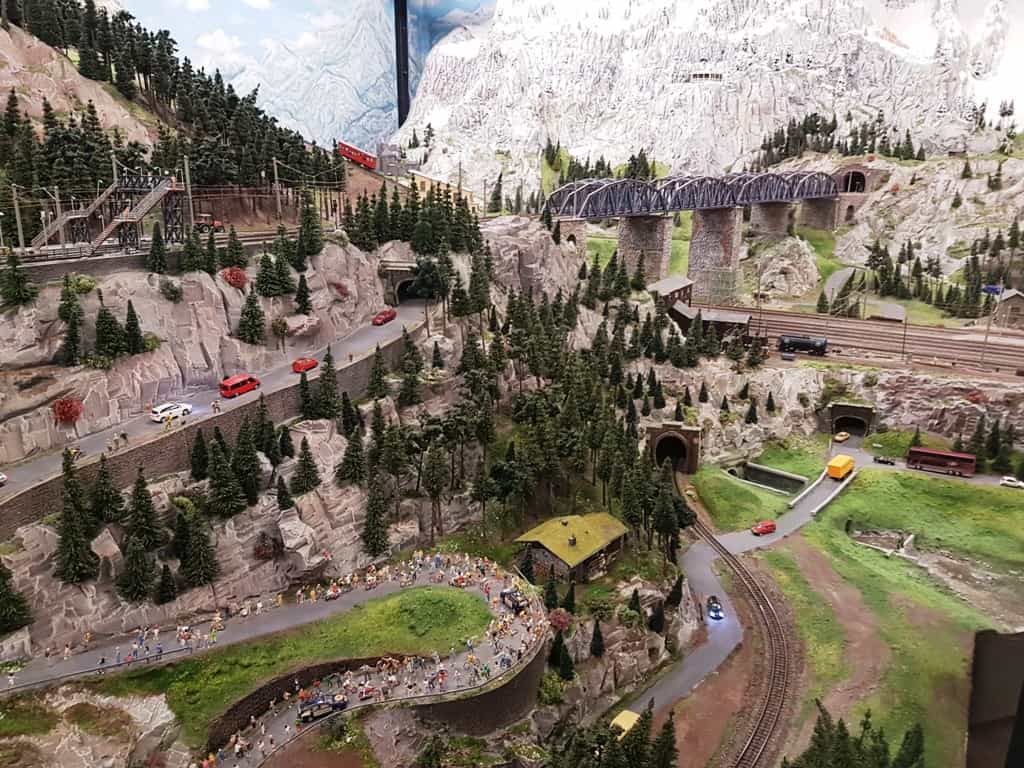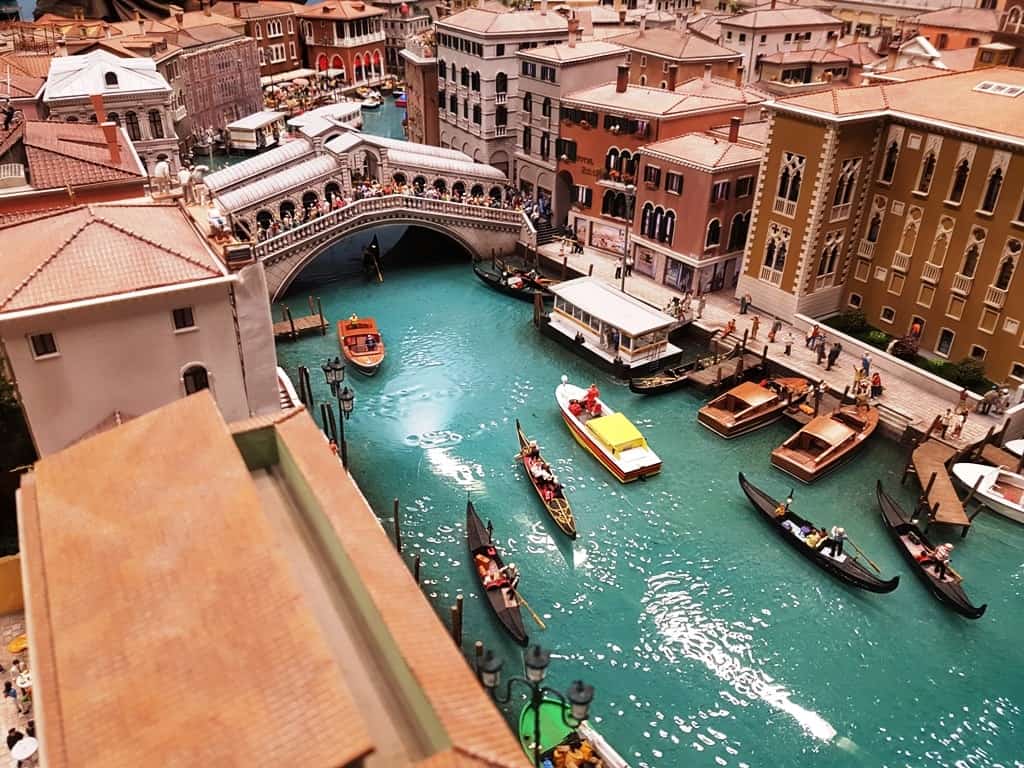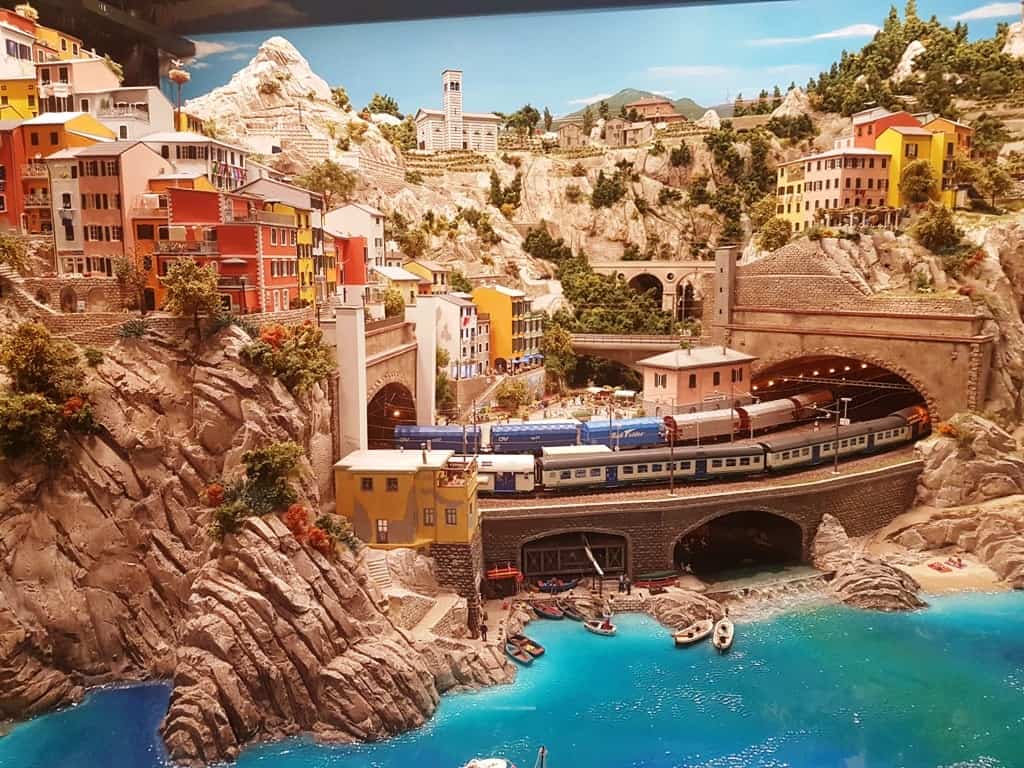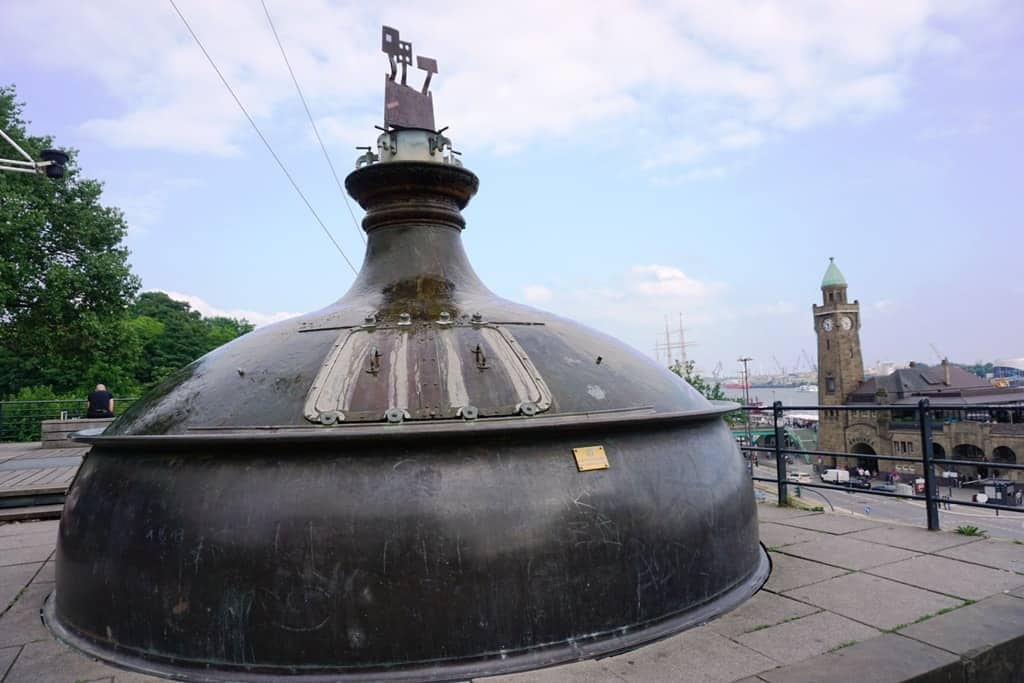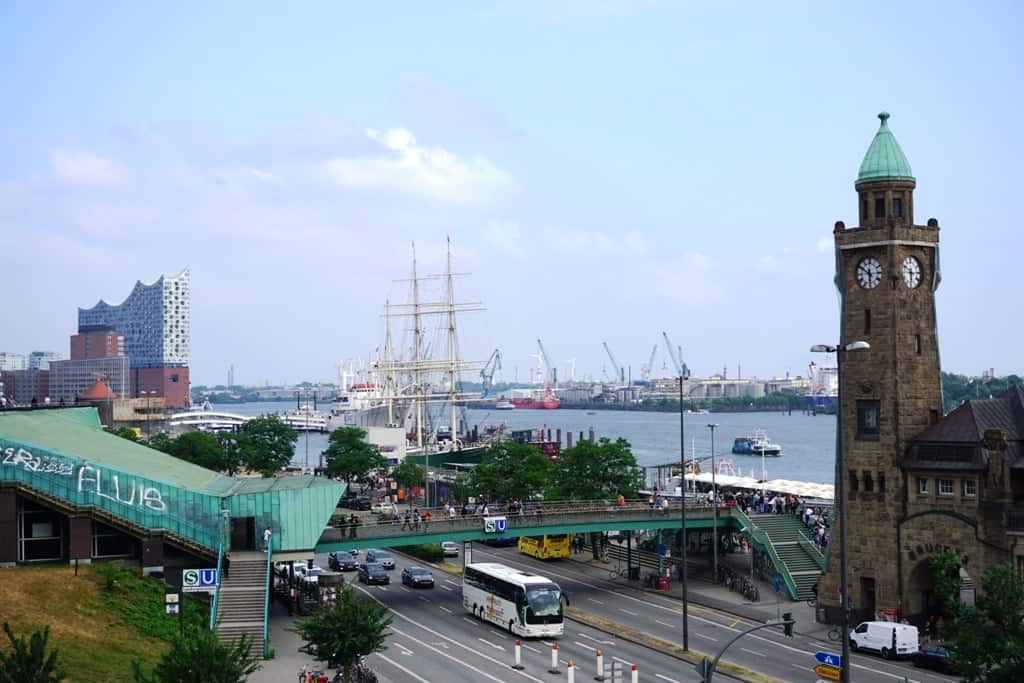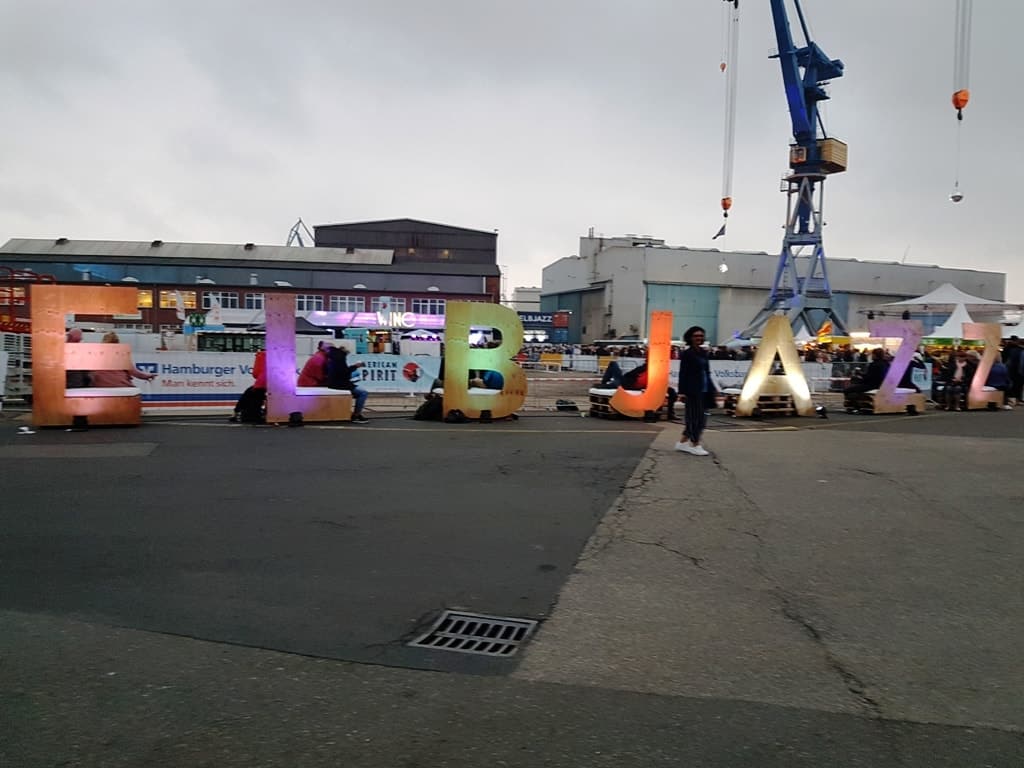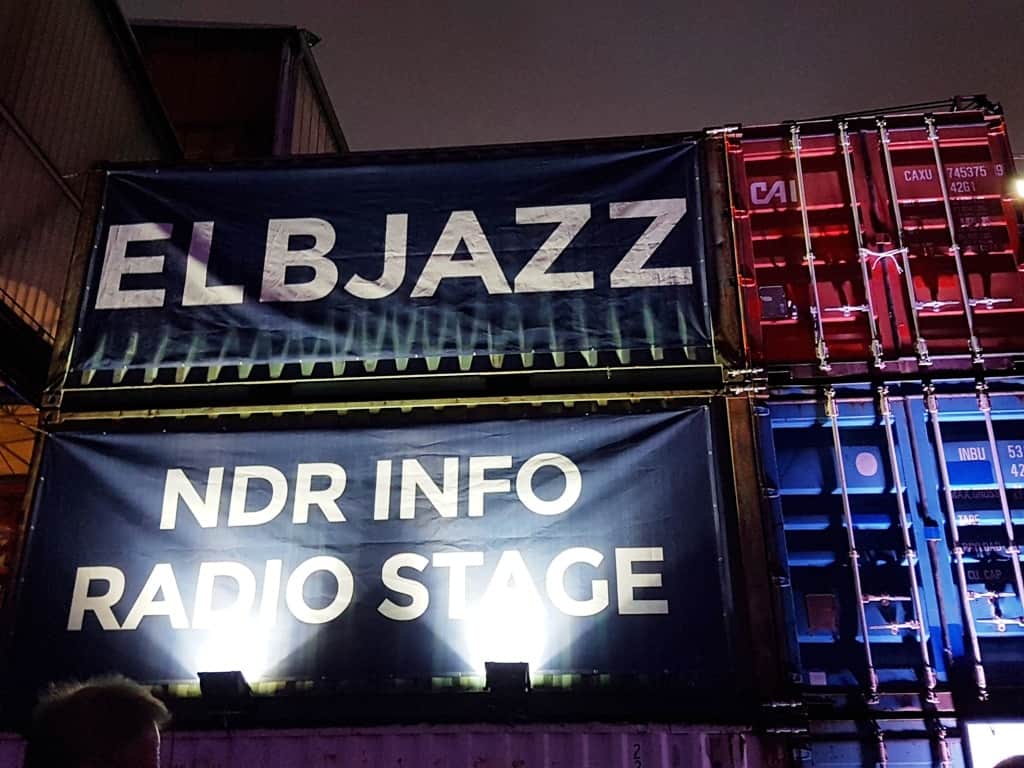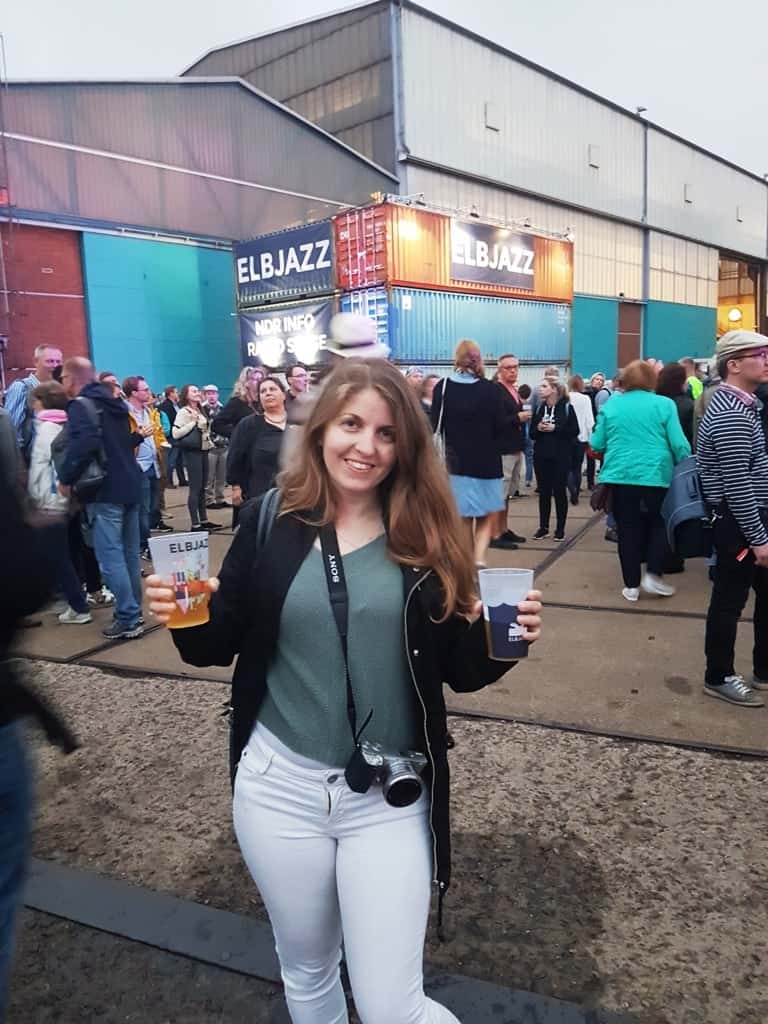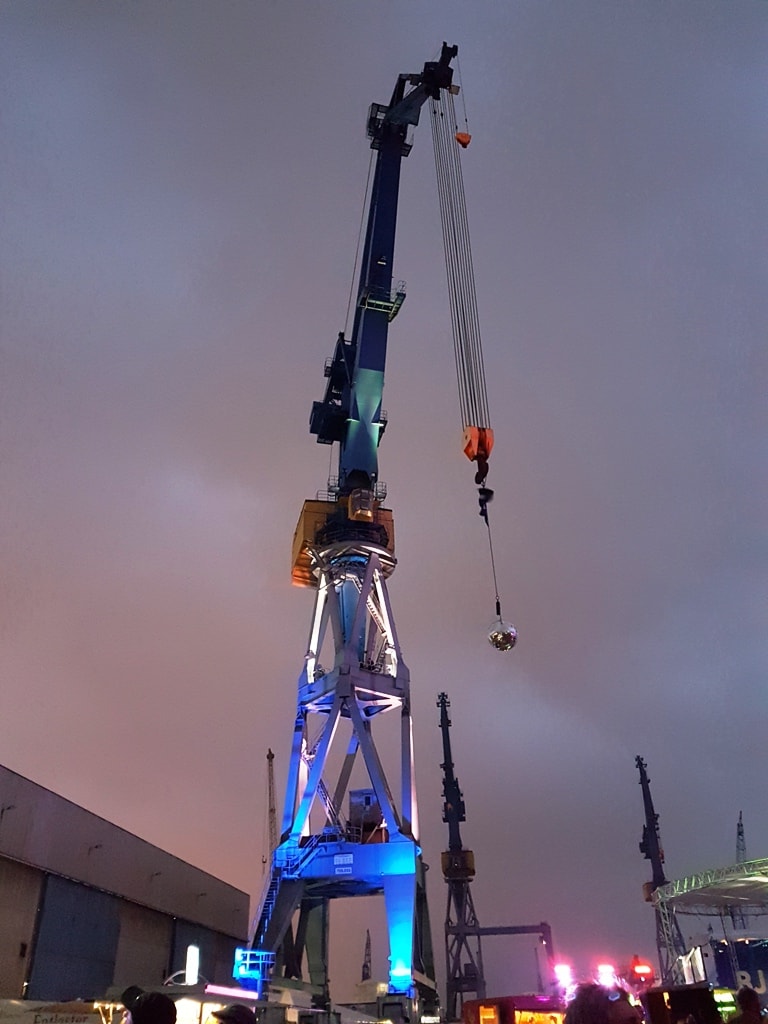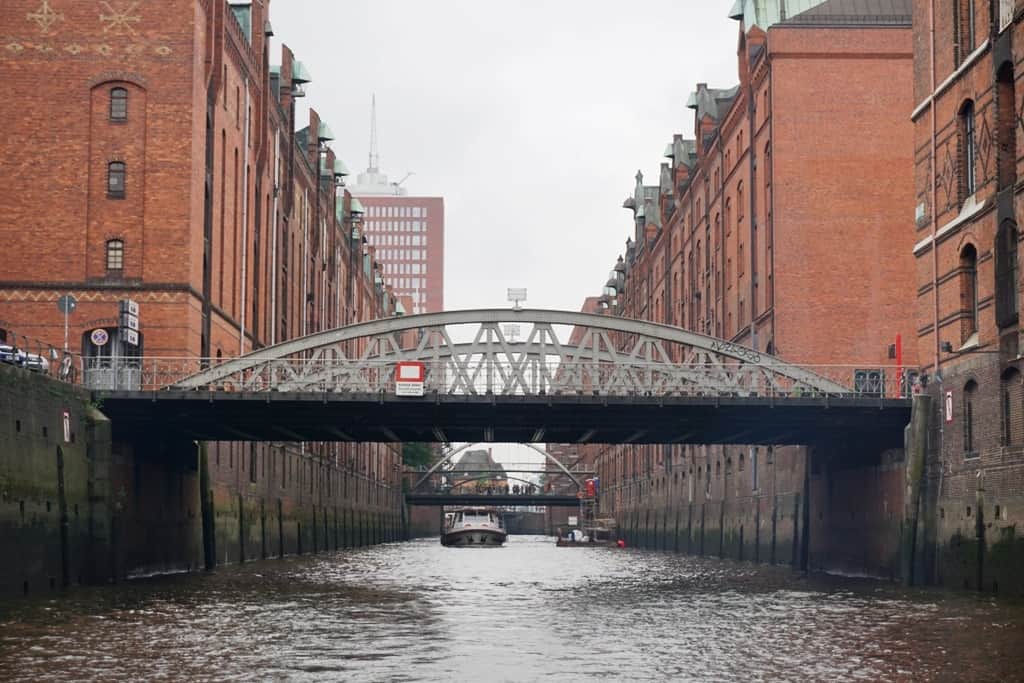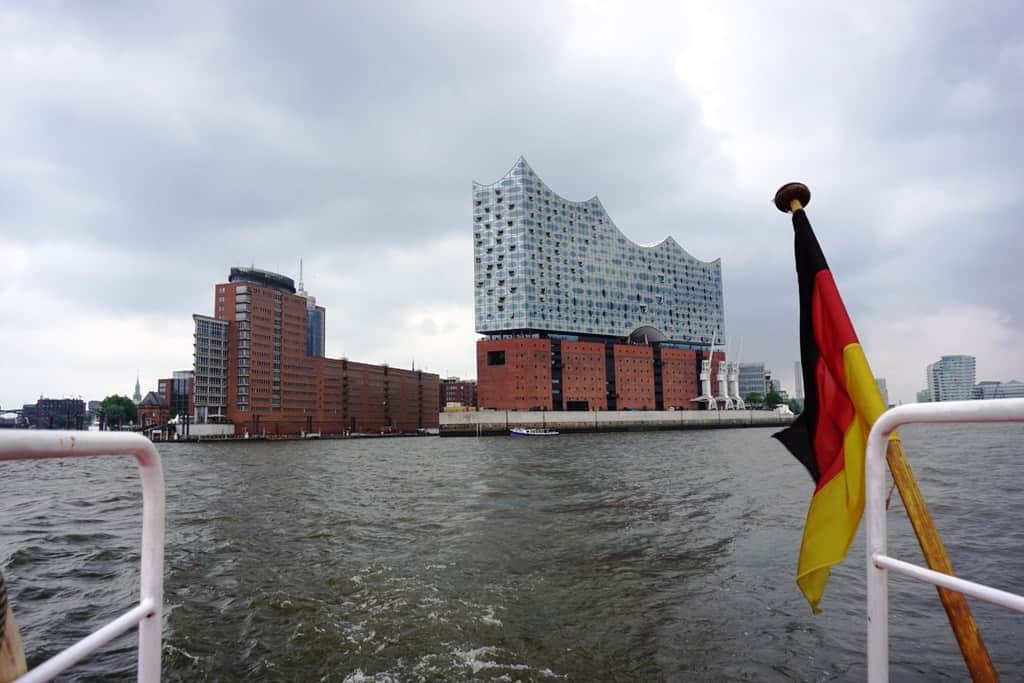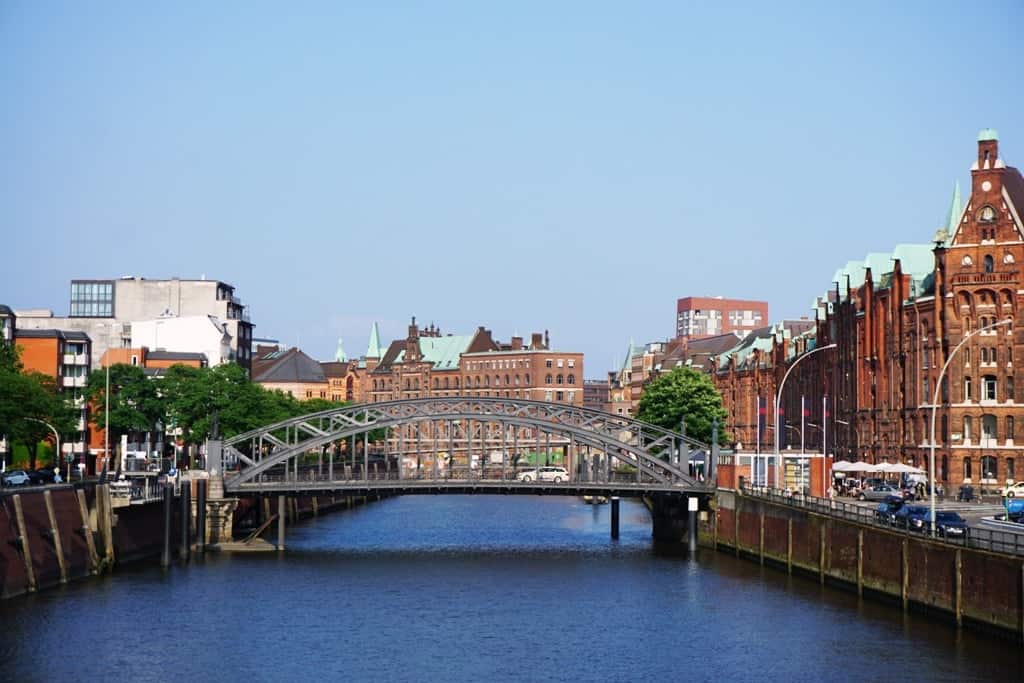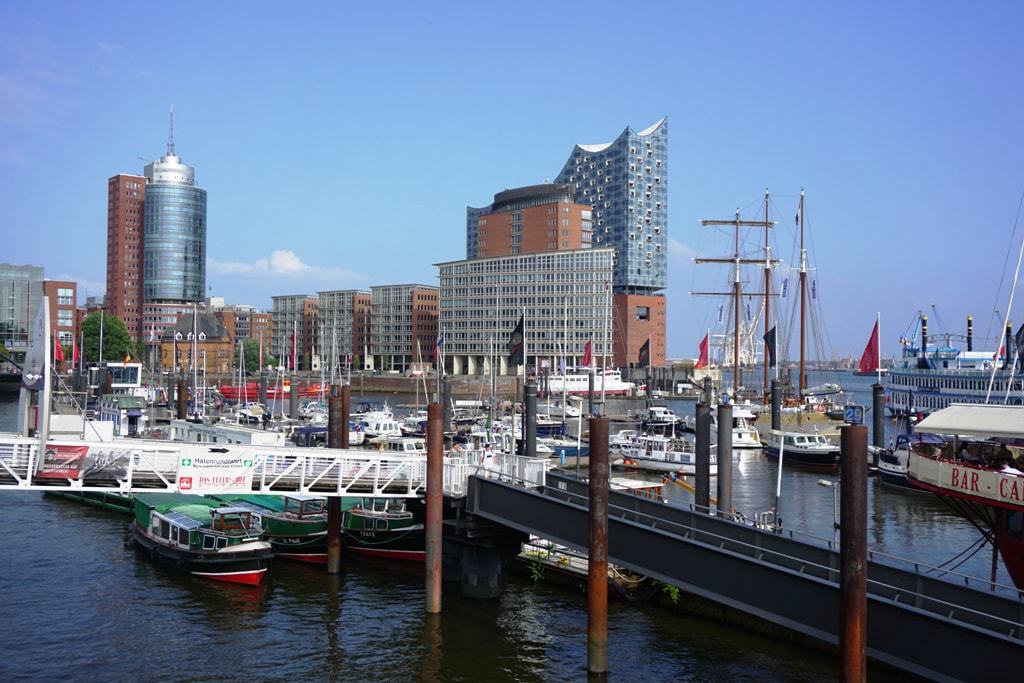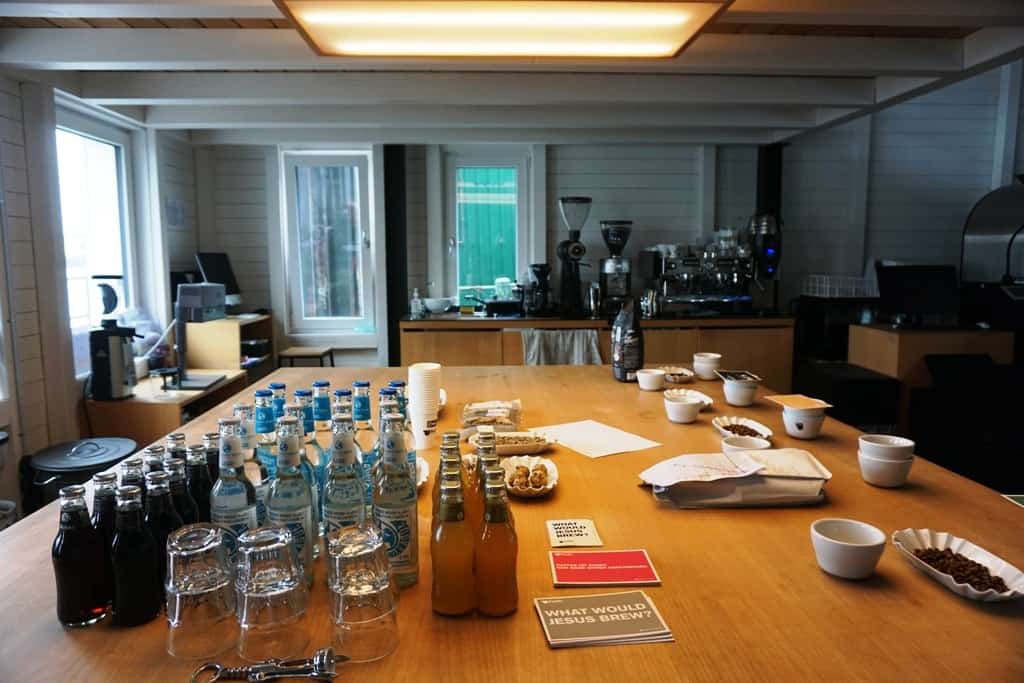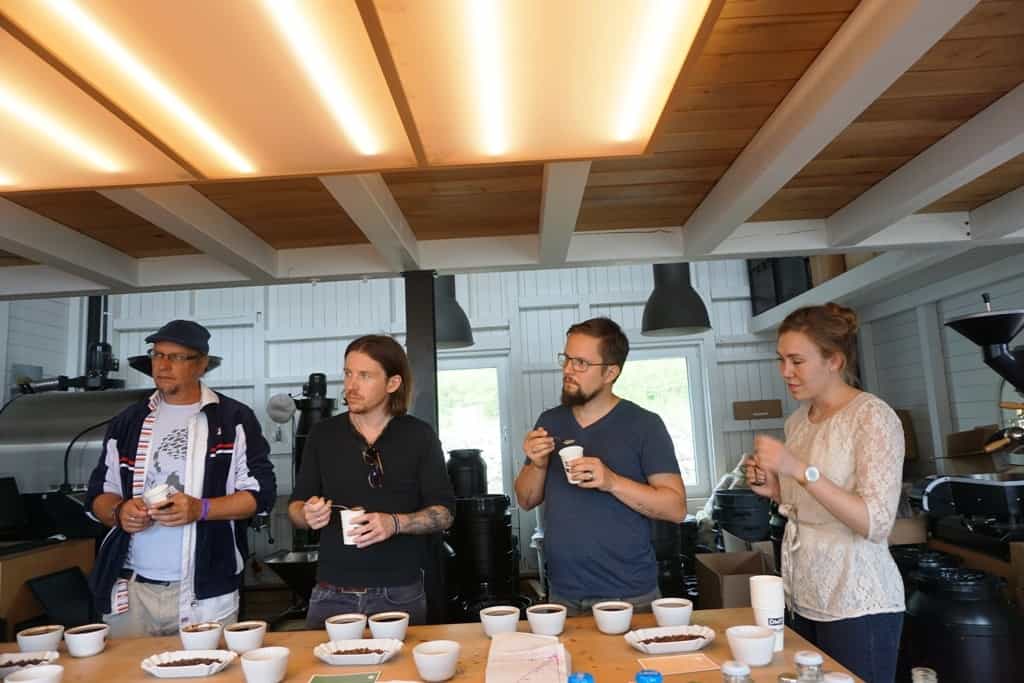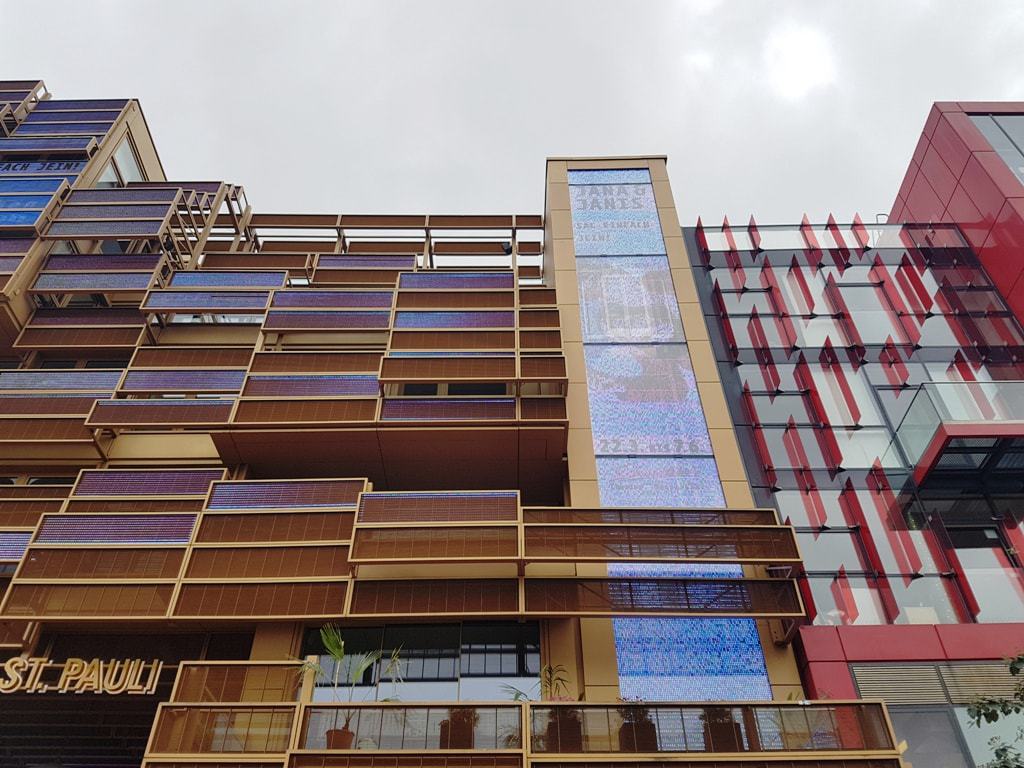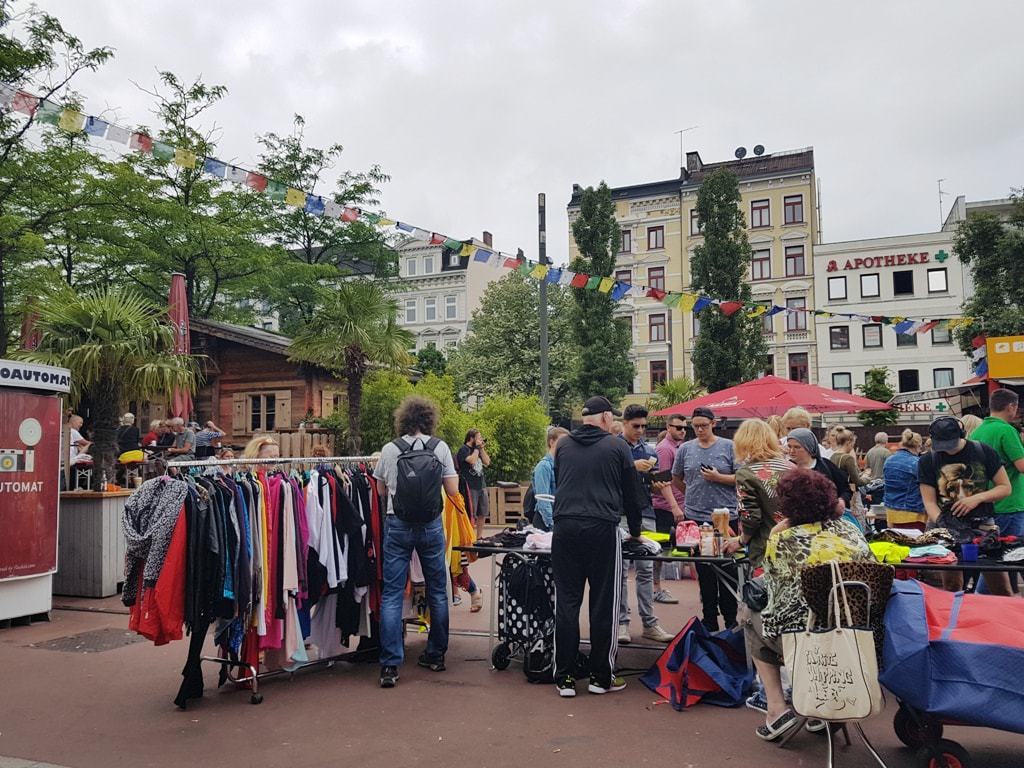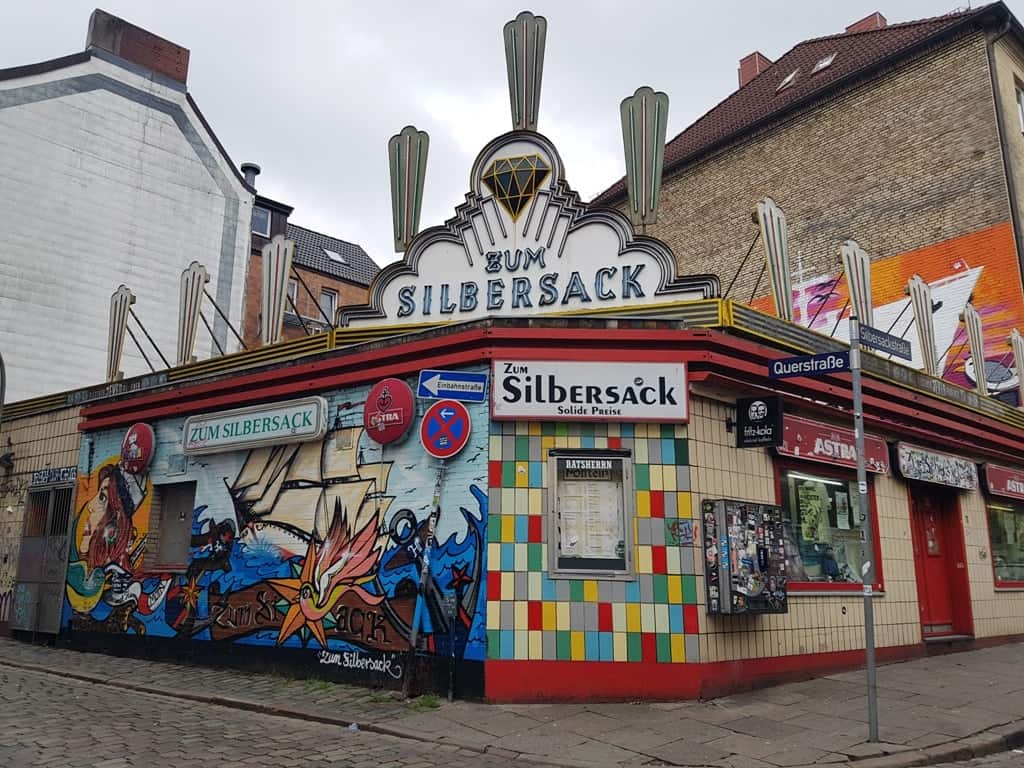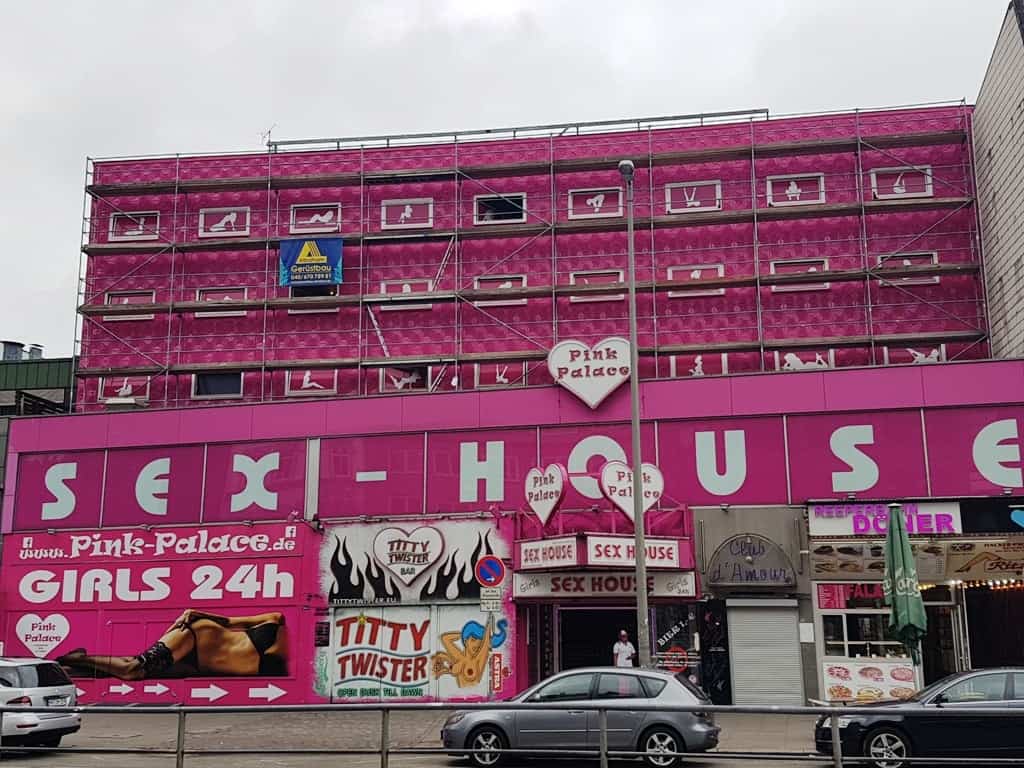This post is also available in: French
Hamburg is one of Germany’s major port cities, connected to the North Sea by the Elbe River. It’s known for its many canals, parkland, and 18th-century buildings. Its strategic position in Europe meant it was a powerful city during the Holy Roman Empire and in the Hanseatic League (medieval times). Hamburg was independent from the 15th to the 18th centuries, then independent as a German city-state until Nazi Germany, before being a West German city-state until the reunification of Germany in 1990. I recently spent a long weekend in Hamburg, exploring the city and attending the Elbjazz Festival. Here is what I did with three days in Hamburg, Germany.
Table of Contents
How to Spend a Weekend in Hamburg
Where to stay: Motel One Hamburg am Michel
On my first day, after arriving at Hamburg Airport, I checked into my hotel, the Motel One Hamburg am Michel. This modern design hotel is located in the Neustadt, a short walk from the Museum of Hamburg History and St Michael’s Church. It’s chic design pays homage to the Beatles, who performed in Hamburg before they were famous. My room faced south, towards the port, and was comfortable, clean, and well-appointed with luxurious toiletries, plush hypoallergenic pillows, and free wifi. The breakfast buffet served plenty of healthy and organic options like fruit, yogurt, and juice as well as the usual eggs and sausage.
Address: Ludwig-Erhard-Straße 26, 20459 Hamburg
Website: https://www.motel-one.com/en/hotels/hamburg/hotel-hamburg-am-michel/
A weekend in Hamburg – Day One
Tour of the Speicherstadt
Later that day, I took a guided tour of the Speicherstadt and Hafencity. This central district is such a juxtaposition of old and new! Speicherstadt is the old warehouse district, home to gigantic and imposing warehouses that line the canal and are built on over three and a half million sturdy oak pylons. They were originally used to store trading goods, like coffee, tea, and spices.
Today, they house some of the city’s museums. Adjacent is the Hafencity, a new development only created in the early 2000s. It is a thriving arts community with wonderful food and the new Elbphilharmonie concert hall, known as the “Elphi.”
You might also be interested in the alternative Hamburg Schanzenviertel.
Sprinkenhof, Chilehaus, and Speicherstadt
During our tour, we visited the Sprinkenhof, Chilehaus, and Speicherstadt, a UNESCO World Heritage Site. The Sprinkenhof is a 20th-century office building, built in three stages over the course of twenty years. Its initial design took a lot of elements from the Doge’s Palace in Venice, Italy, and is spread over three courtyards. The current space houses various office buildings, restaurants, and shops.
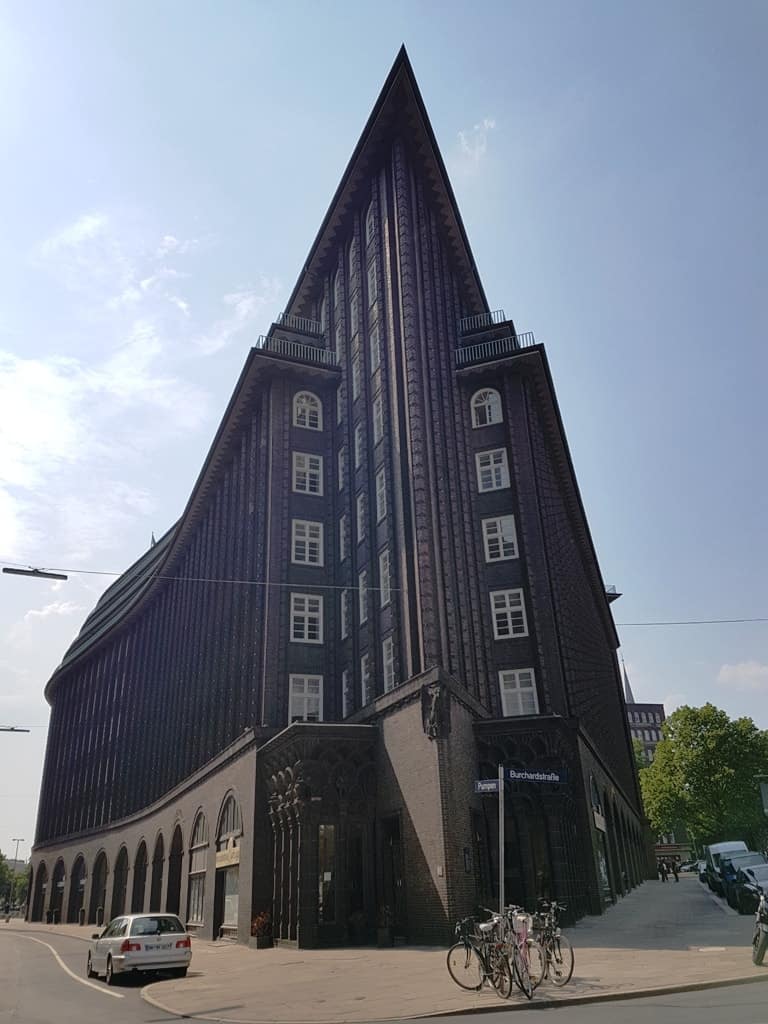
The Chilehaus is located right next door. Its iconic architectural design makes it look like the prow of a ship and is considered a great example of Expressionism architecture. The Chilehaus, also multi-use, was one of Hamburg’s first buildings with over ten stories.
Speicherstadt, the former customs port area, was built in the 19th century on two of the Elbe islands. It is no longer part of the customs port and instead houses the Spices Museum, Zollmuseum, and the world’s largest model railway.
Kaffeemuseum Burg
Midway through the tour, we stopped for a coffee in Kaffeemuseum Burg. In part due to the extensive trading that occurred in Hamburg, the city has a wonderful coffee culture. This museum showcases the culture of coffee, from the way that the beans get to the city all the way to the roasting process and the ritual of making and drinking it.
Address: St. Annenufer 2, 20457 Hamburg
Website: https://kaffeemuseum-burg.de/
Elbphilharmonie
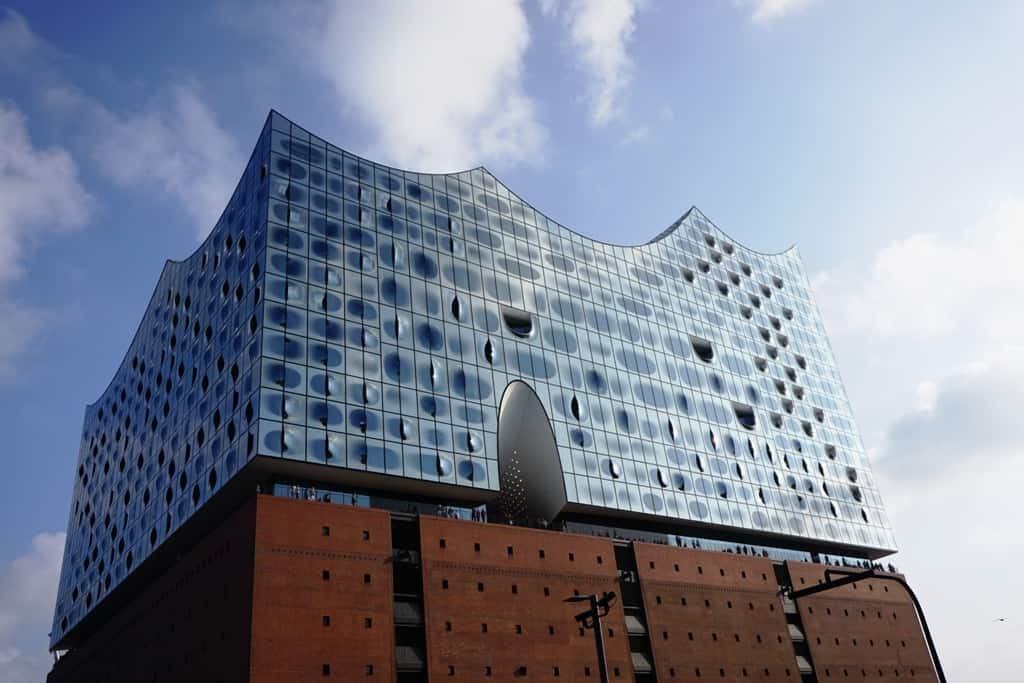
Finally, we went to the Elbphilharmonie and saw a performance. This striking building, whose modern design resembles sails, was only completed in January 2017. It took ten years to build and ran over budget by almost 700 million, however it is one of the world’s most impressive and acoustically advanced concert halls in the world.
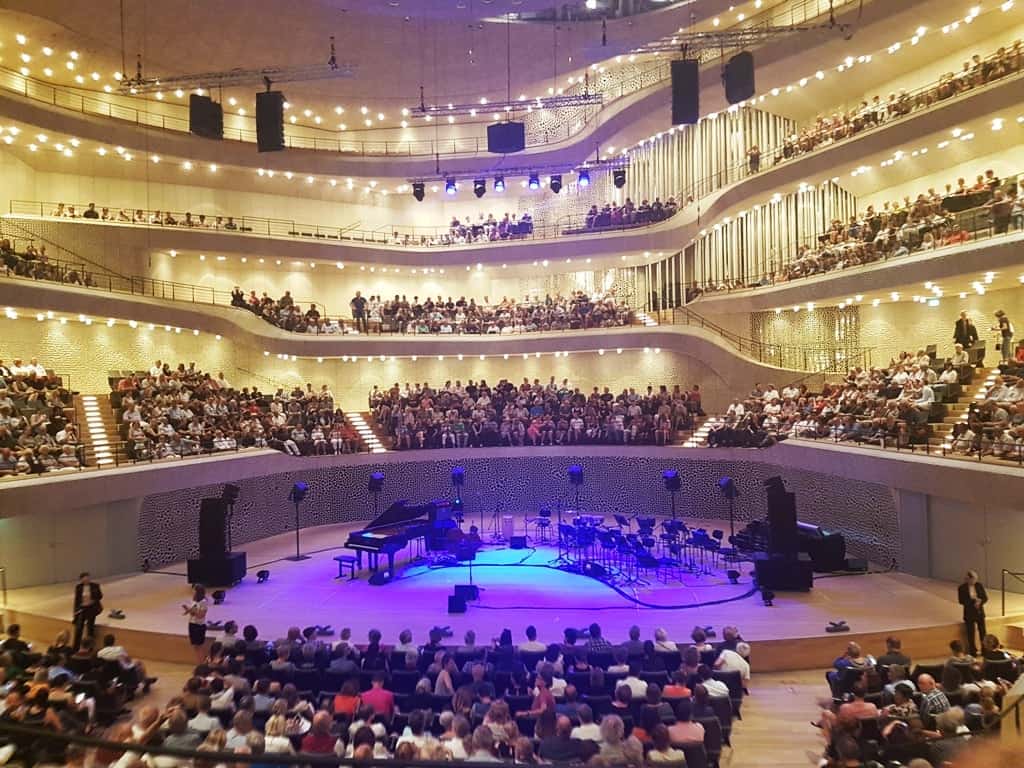
The complex also holds the Westin Hamburg luxury hotel and 45 luxury apartments. The view from the top of the building is stunning and you can enjoy it free of charge, just take a free ticket from the ground floor (next to the escalator).
Dinner at VLET
Following the performance, we dined at VLET, in Speicherstadt. Its modern interior recognizes the historic atmosphere and works to preserve the original features of the building. The menu, likewise, highlights North German cuisine and offers modern takes on classic Hanseatic dishes. I had the beef fillet with asparagus, from the Asparagus Menu, which of course highlights this favorite German vegetable.
Address: Am Sandtorkai 23-24, 20457 Hamburg
Website: https://www.vlet.de/en/
You might also be interested in: The best Christmas markets in Germany.
A weekend in Hamburg – Day Two
St Michael’s Church
I explored a little more of Hamburg on day two. St Michael’s Church, located only a few hundred metres from my hotel, was my first stop. This 18th century baroque church is the most recognisable landmark in Hamburg and one of the only ones to be built as a Lutheran church rather than converted from Roman Catholic. It’s 132-metre high steeple can be seen from the river and was used by ships to orient themselves. The church and crypt are still used today and can seat over 2,000 people.
Hamburg Rathaus
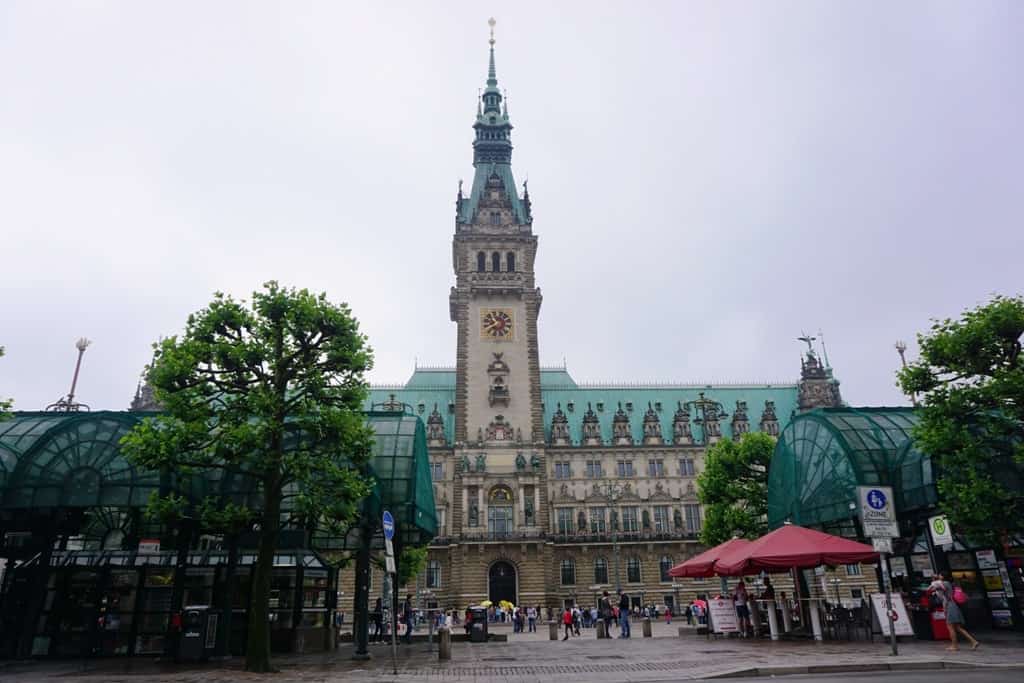
The Hamburg Rathaus is located in the Altstadt near the central railway station and Rathausmarkt. It is an imposing neoclassical structure, built in the last half of the 19th century, with nearly 650 rooms. Today, it houses the First Mayor’s office as well as meeting rooms for both parliament and senate.
Alsterarkaden
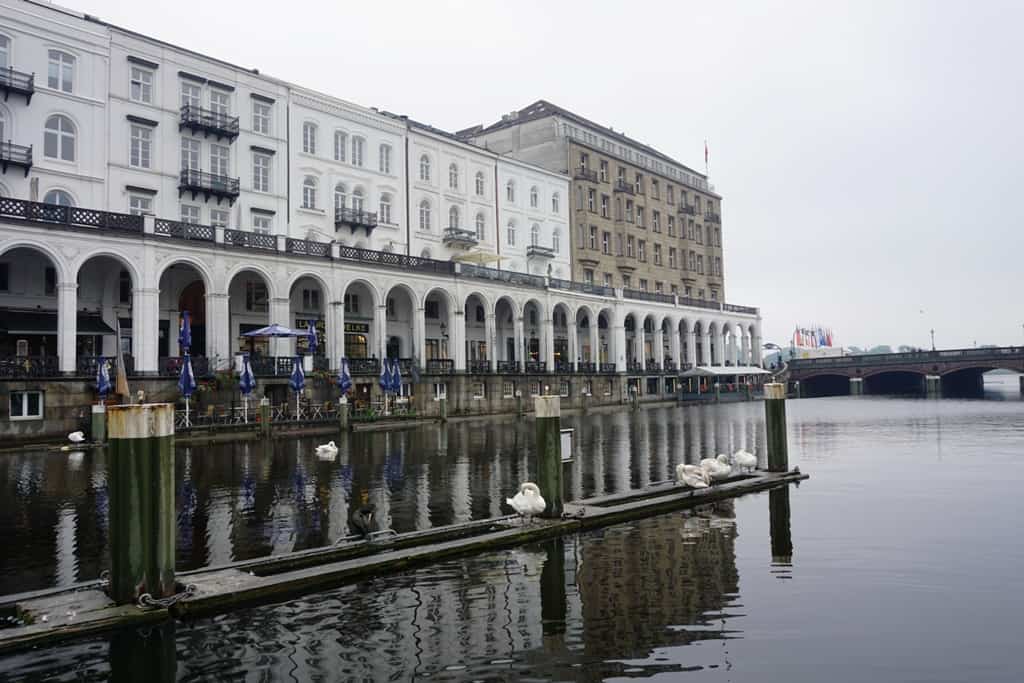
The Alsterarkaden are a series of Venetian-style arcades near the Jungfernsteig, at the water’s edge in Neustadt. They were designed and built by urban planner Alexis de Chateauneuf following the Great Fire of 1842 and were inspired by his trips to Italy.
Today they house numerous designer shops, cafes, restaurants, and bars. The Mellin Passage connects the Alsterarkaden with the Neuer Wall shopping street. Here, uncovered following a fire in 1989, are elaborate frescoes and intricate stained glass in the upper galleries.
Miniatur Wunderland
Miniatur Wunderland is a very popular Hamburg attraction for kids and adults alike. It is the world’s largest miniature model railway, featuring Hamburg, the Alps, France, Italy, North America, and Scandinavia. Plans are in place for more. This miniature world is the brainchild of two German brothers, Frederik and Gerrit Braun, who began work in December 2000.
Address: Kehrwieder 2-4/Block D, 20457 Hamburg
Website: https://www.miniatur-wunderland.com/
Lunch at the Bootshaus Grill & Bar
Following our walking tour of the above sights, we enjoyed a late lunch at Bootshaus Grill & Bar in Hafencity, near the Elphi. I had a ladies cut fillet with mashed potatoes and peppercorn sauce, which was delicious and perfectly cooked. Their menu focuses on local dishes and changes regularly.
Address: Am Kaiserkai 19, 20457 Hamburg
Website: http://bootshaus-hafencity.de/
Bike Tour with HH City Cycles
After lunch, we did a bike tour of Hamburg with HH City Cycles. They have a variety of tour options, something for everyone. Our bicycle tour took us from the Hafencity to Övelgönne via St. Pauli. We rode alongside the river, past residential streets and fields. We also had excellent views of the harbour, the maritime industry of Hamburg, the Airbus factory, and the Altesland.
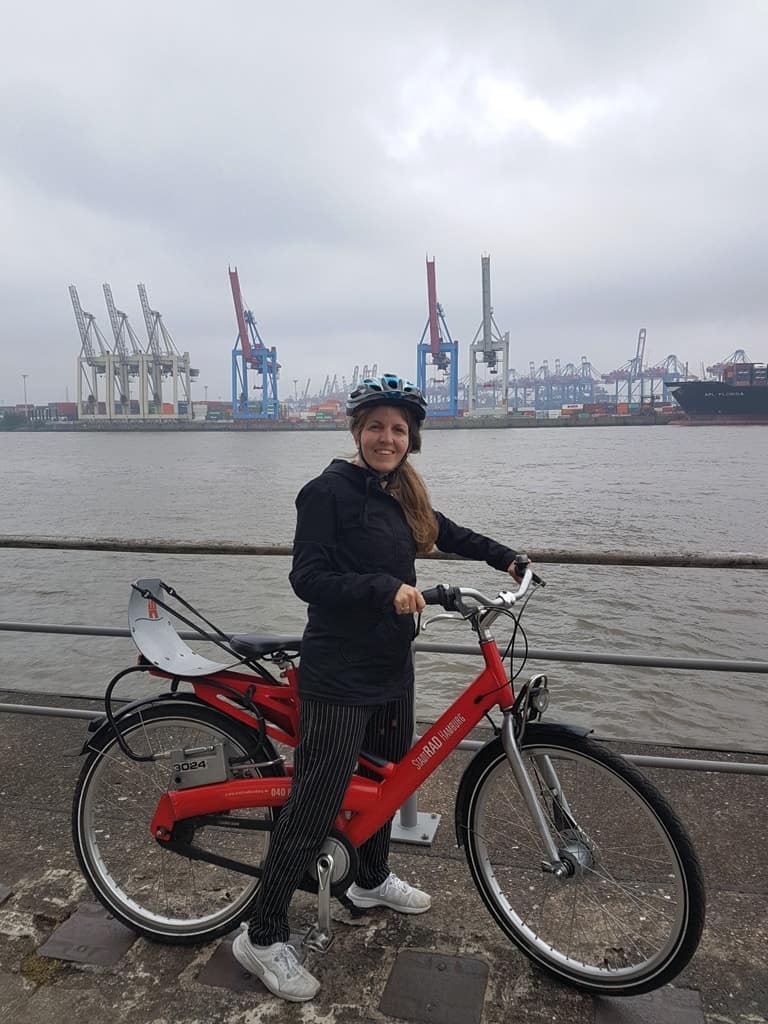
Address: Bernhard-Nocht-Straße 89, 20359 Hamburg
Website: https://www.hhcitycycles.de/en/
Dinner at the Olá Lisboa
We had a great dinner at Olá Lisboa, a tapas restaurant in the Portuguese Quarter. The Portuguese Quarter, adjacent to St. Pauli, is home to a number of Portuguese and Spanish immigrants who came to Hamburg in the 1960s and 1970s. With a number of Iberian bars and restaurants, it’s the best place in Germany to taste authentic tapas, natas, and other traditional Portuguese food. The neighborhood is also rich in Scandinavian churches. During the holidays, the area is rich with a unique pan-European culture that spans from Bacalhau to reindeer stew.
Address: Ditmar-Koel-Straße 18, 20459 Hamburg
Website: http://ola-lisboa.de/
Old Elbe Tunnel
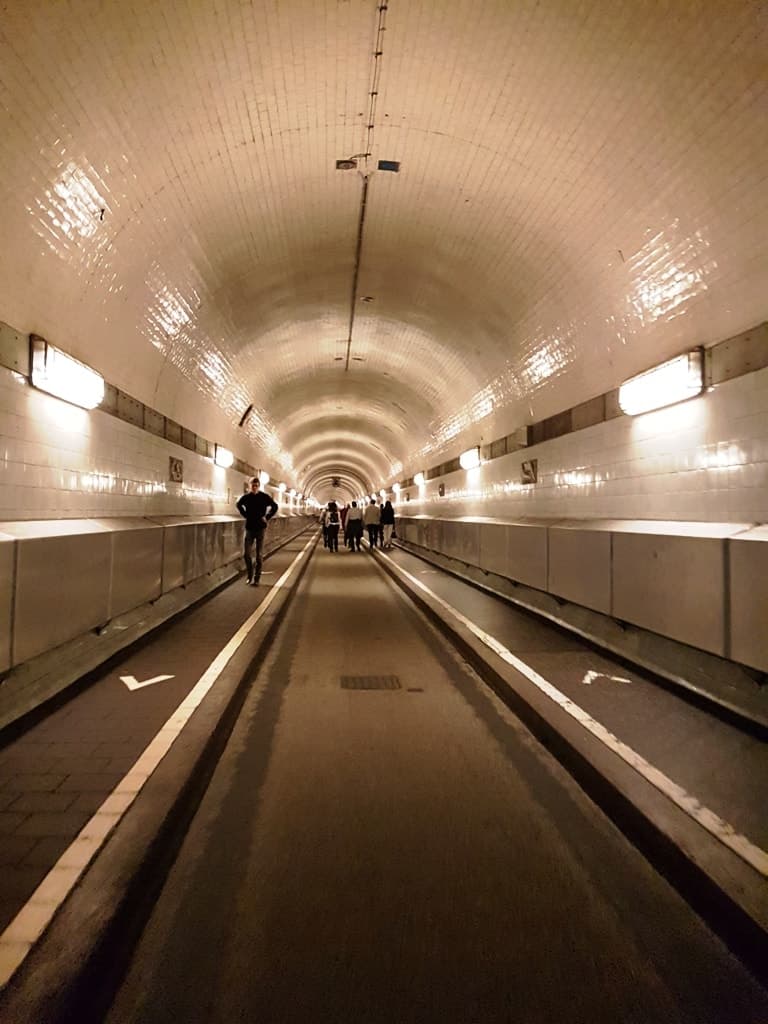
The Old Elbe Tunnel connects the two sides of the Elbe River and port; it is located in St. Pauli. It became necessary as the Port of Hamburg grew, due to the increase in traffic and need for workers, and finally was conceived in 1911. The tunnel, which is both motor vehicle- and pedestrian-friendly, was modeled after the Clyde River Tunnel in Glasgow, Scotland, and was the first river tunnel on the European continent.
Elbjazz Festival
We then headed to Hamburg’s famous Elbjazz Festival that takes place on the first weekend of June each year. It showcases 50 or so jazz performers in a variety of venues in the Hamburg harbor, from open-air theatres to intimate stages. In 2017, the festival also began performing at the new philharmonic theatre in Hafencity. Artists come from all across the world to perform at Elbjazz. Most performers have some connection to jazz, but not all are jazz artists.
The festival strives to introduce a fluid music scene that draws from the jazz style while highlighting modern musical genres. Festival tickets go on sale the year prior and do sell out. Ticket holders can utilize public transport to get to and from the festival, saving the trouble of finding a cab. I really liked the relaxed atmosphere at the festival, people of all ages were having fun and enjoying the music in an unbeatable location at the port.
For more information: https://www.elbjazz.de/en/start_en
A weekend in Hamburg – Day Three
Harbour Boat Tour
After breakfast at the hotel, we took a tour of the city and harbor by boat, with a really great guide named Tomas Kaiser. We saw the Speicherstadt again as well because the Bülow company boats depart from this district.
The Port of Hamburg is Germany’s largest port and one of the major ports in all of Europe. Its history extends back almost as far as the city itself. Hamburg enjoys a very strategic position in northern Europe and its port was often the first or last point of call for many ships during the maritime trade eras. Today, the tours of the harbor highlight the modern trade.
We saw some container ships being loaded and unloaded. Others await their turn offshore in the North Sea before coming up the Elbe River. Hamburg is also a major cruise ship port; there are three major cruise ship terminals. Luxury yachts also come here. Every kind of ship can be dry-docked here, and there is also an extensive shipbuilding industry.
Public Coffee Roasters – Coffee Tasting
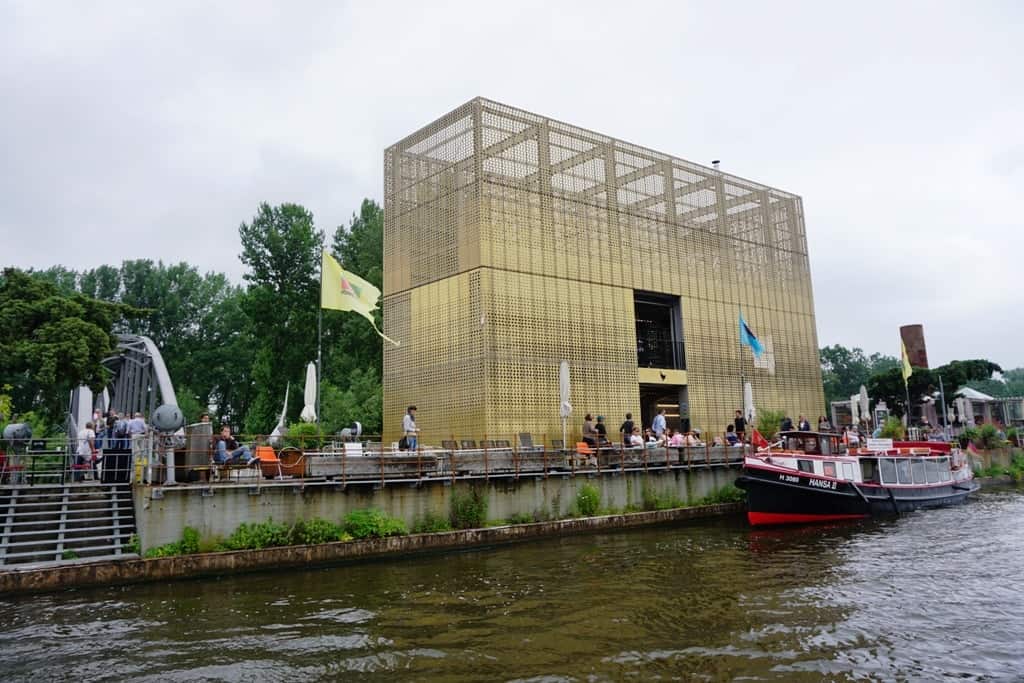
After our Port of Hamburg tour, we went to a coffee cupping at Public Coffee Roasters. This cafe and roastery focuses on educating guests and future baristas about different kinds of coffee and roasts. No matter your tastes – filter coffee, espresso, cold brew – the staff gives detailed advice on the roasts and blends that suit you. Visitors learn how coffees differ from each other, how to properly brew at home, and the art of making flat whites, cappuccinos, and lattes.
A coffee cupping tasting highlights a variety of roasts and blends in a similar way that a wine tasting brings out the differences in wine. After your educational experience, you can visit the riverside cafe and savour a freshly brewed coffee.
For more information: https://www.publiccoffeeroasters.com/
Reeperbahn
Afterwards, we returned to the city centre and I went exploring on my own. I began in the Reeperbahn, Hamburg’s art and entertainment district. It’s also the city’s red light district, so in addition to the theatres, clubs, and bars, there are also sex shops, strip clubs, and brothels. This neighbourhood is famous not just for the live sex shows (which ended in the late 2000s) but also the theatres that host shows like Mamma Mia! and Cats. The Reeperbahn is also famous because it’s the neighbourhood in Hamburg where the Beatles played.
The Beatles’ manager sent them here in the early 1960s, before they were famous, to hone their music. Over the course of two years, they played at various clubs in the Reeperbahn, lived in the back of the clubs, and ran wild with the residents of the neighbourhood. John Lennon once said that Hamburg was really where he “grew up.”
I ended my three days in Hamburg with a walk through the port district and St. Pauli piers. I really enjoyed my visit to Hamburg. The city is vibrant and fun, with a long history in trade, art, music, and media. There’s great food, drink, and coffee too, and the people are incredibly nice and welcoming. Hamburg has plenty to offer visitors, from the port and Speicherstadt to Hafencity and the Altstadt. I definitely recommend visiting Hamburg on your next trip to Germany!
Heading to Berlin? Check out my 4-day Berlin itinerary.
I was a guest of Hamburg Tourismus GmbH but as always opinions are my own.

